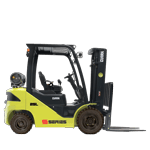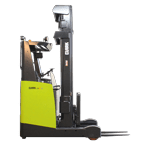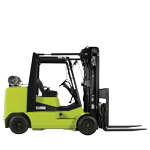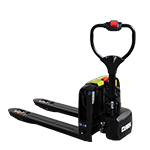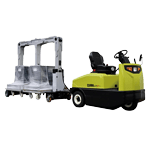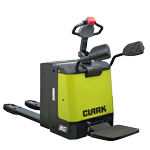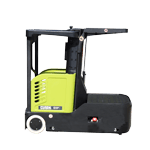The CLARK success story at a glance
The CLARK Museum at the European headquarters in Duisburg documents with numerous exhibits the milestones in the over 100-year history of the inventor of the forklift truck. The museum is not only a record of CLARK's historic past, but is also dedicated to the people who have contributed to making CLARK the global company it is today.
The museum displays a number of important artefacts dating back to the beginning of the material handling equipment industry in 1917. Highlights of the exhibition include a replica of the TRUCTRACTOR, the first gasoline-powered forklift truck built by Eugene B. Clark for CLARK Equipment Company employees to transport materials around the plant, a replica of the DUATS, developed in 1923, the first transport vehicle with a mechanical slip-on upright, a YARDLIFT with pneumatic tyres and a CDP25H diesel forklift with a load capacity of 2.5 tonnes and hydrostatic drive.
In addition, all CLARK innovations and contributions that have been significant for the entire industry are clearly presented on a timeline. Other exhibits include literature from the previous decades, photos, forklift models and a variety of marketing materials that CLARK has used to support sales over the years. Take a virtual look into our museum.
- All
- 1917
- 1919
- 1922
- 1923
- 1924
- 1926
- 1927
- 1928
- 1938
- 1939
- 1941
- 1941 - 1945
- 1942
- 1943
- 1945
- 1946
- 1948
- 1950
- 1951
- 1953
- 1956
- 1959
- 1964
- 1967
- 1968
- 1972
- 1974
- 1976
- 1981
- 1983
- 1985
- 1990
- 1991
- 1994
- 1997
- 1998
- 1999
- 2001
- 2002
- 2003
- 2004
- 2005
- 2006
- 2007
- 2008
- 2010
- 2011
- 2012
- 2014
- 2015
- 2016
- 2017
-
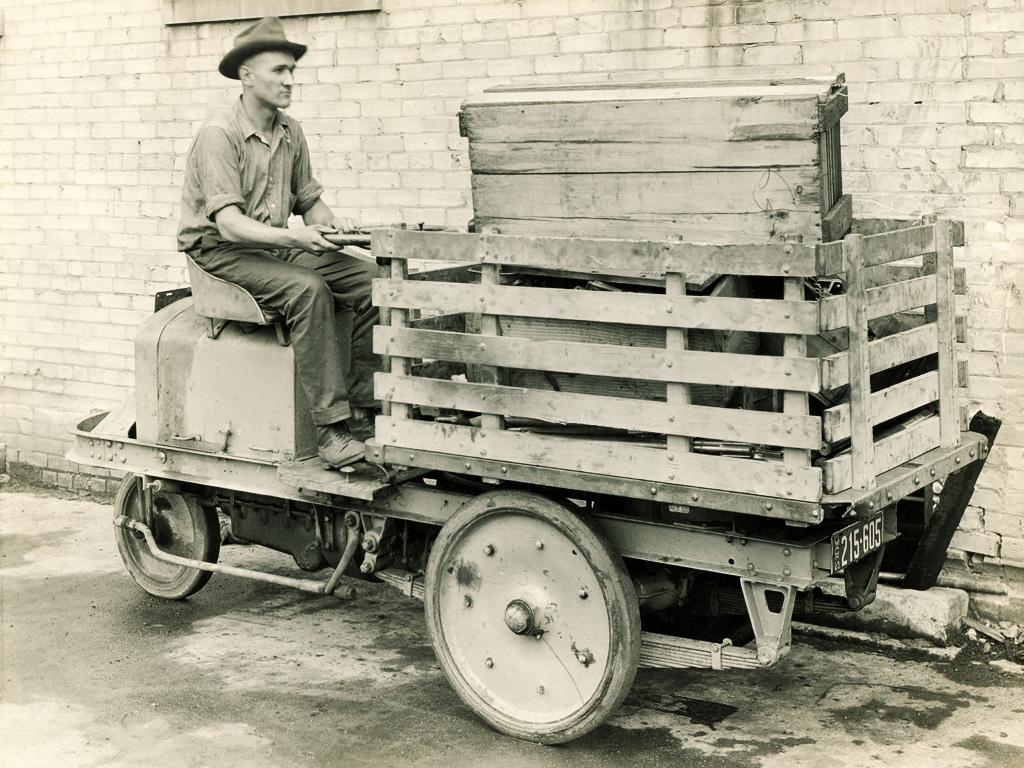
1917
The first Tructractor is built in Buchanan, Michigan by employees of the CLARK Equipment Company. The Tructractor was the world's first internal combustion-powered industrial truck. The Tructractor was originally configured with a flat bed or cargo box and was manually loaded and unloaded. It was used to haul materials between CLARK's various axle, drill and wheel departments. However, visitors to the plant were impressed with its practicality and asked CLARK to also build Tructractors for them. In 1918, eight Tructractors were built and in 1919 over 75 were manufactured. -
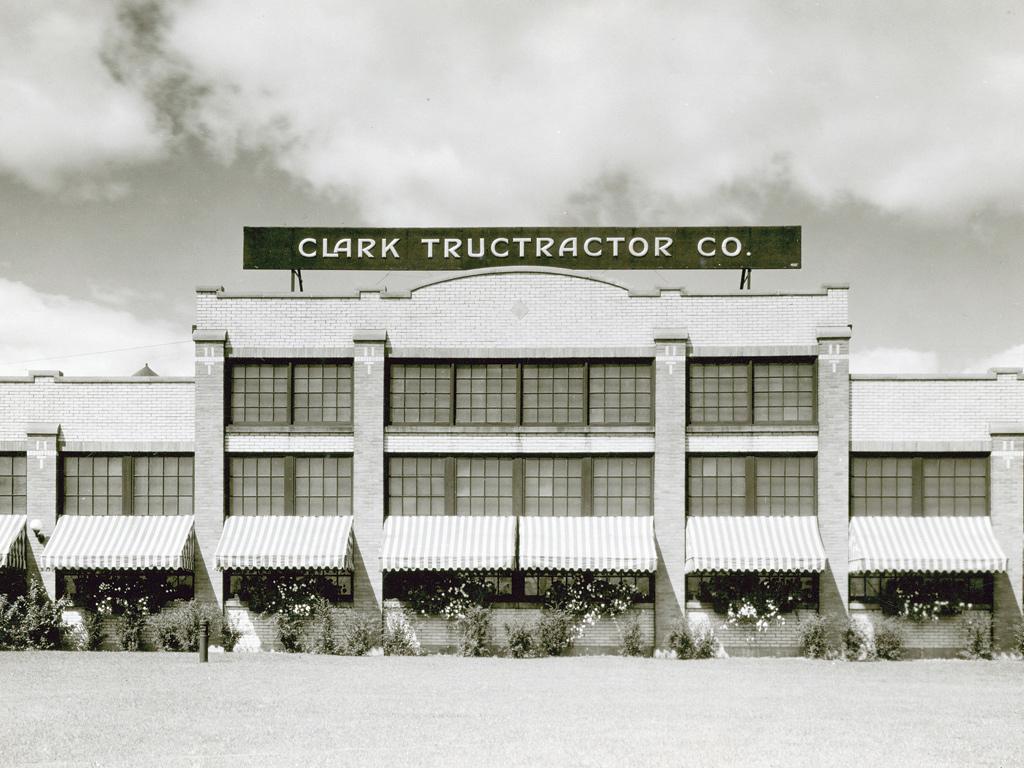
1919
The CLARK Tructractor Company is formed in Buchanan, Michigan as a division of the CLARK Equipment Company. Today's CLARK Material Handling Company is a direct descendant of the CLARK Tructractor Company. CLARK enters the export market as the first Tructractor is shipped to France. -
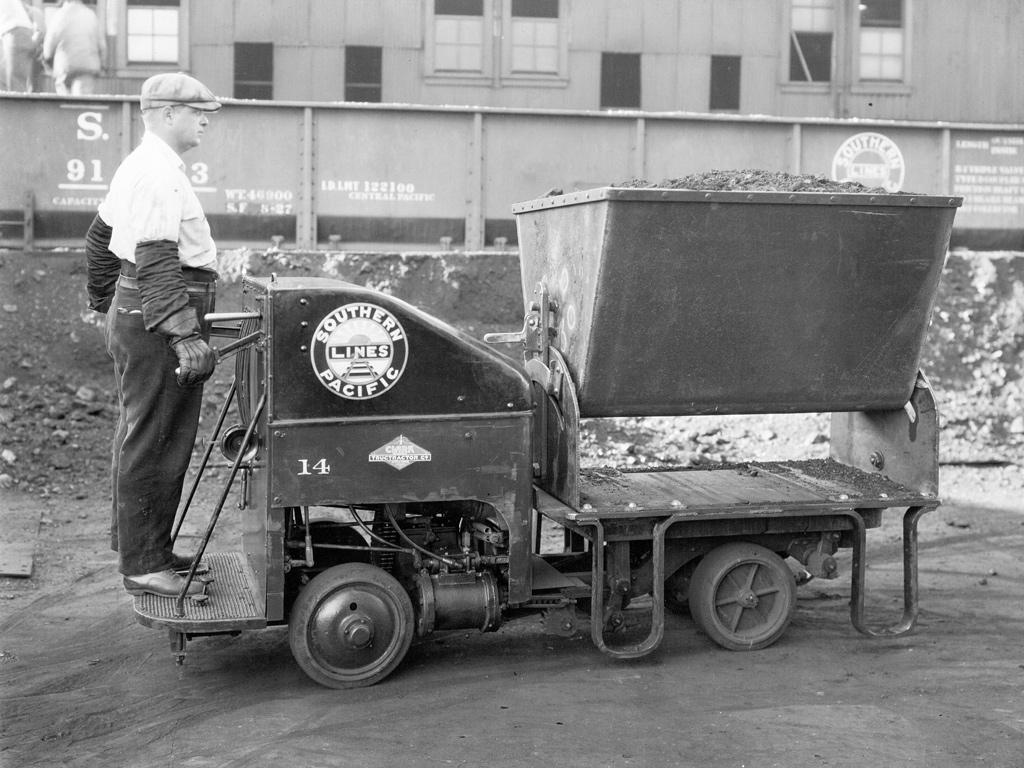
1922
The Truclift, an internal combustion-powered platform lift truck, is introduced. The Truclift was the world's first internal combustion lift truck that used hydraulics, not mechanical gears and linkage, to lift a load. Tructractors and Truclifts begin to be produced at a new CLARK plant in Battle Creek, Michigan. -
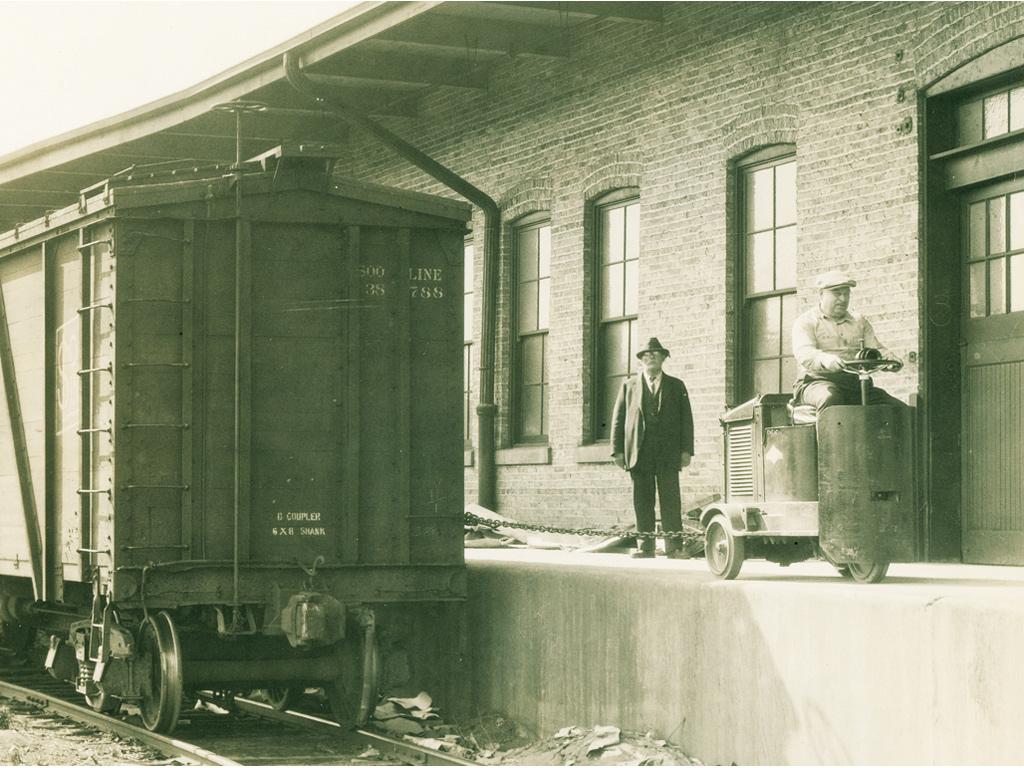
1923
The Duat tow tractor is introduced. The Duat was used to pull trailer loads of lumber, freight and industrial materials.
-
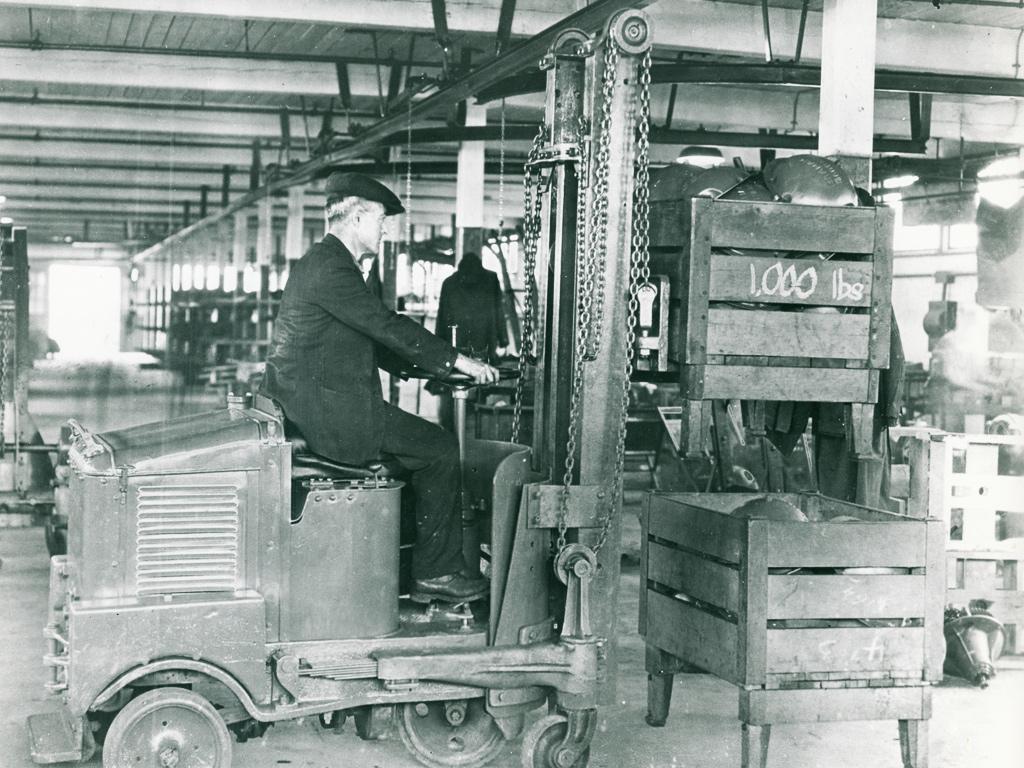
1924
First shipment of a Duat with an optional tiering attachment. This modified Duat became the world's first internal combustion forklift truck.
-
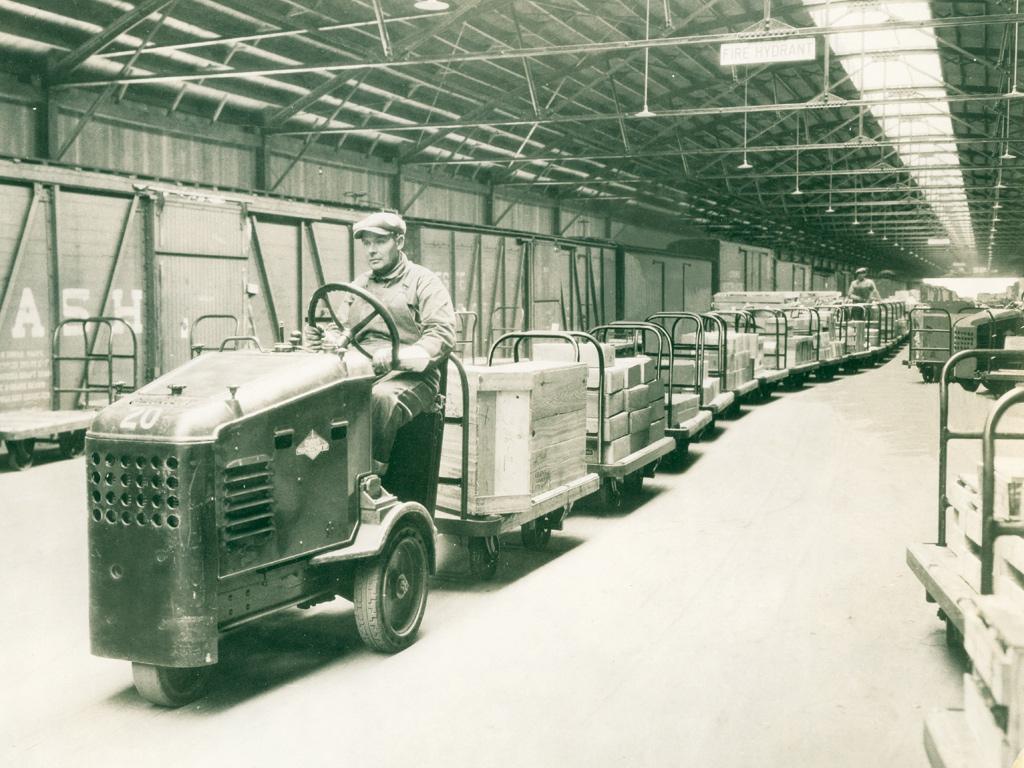
1926
The Clarktor tow tractor is introduced. The Clarktor had drawbar pull ratings of 2000 and 2600 pounds. The Clarkat replaced the Duat, which had a drawbar pull rating of 1500 pounds. The Clarkat was used to pull trailers of freight and material and remained in production until 1982. -
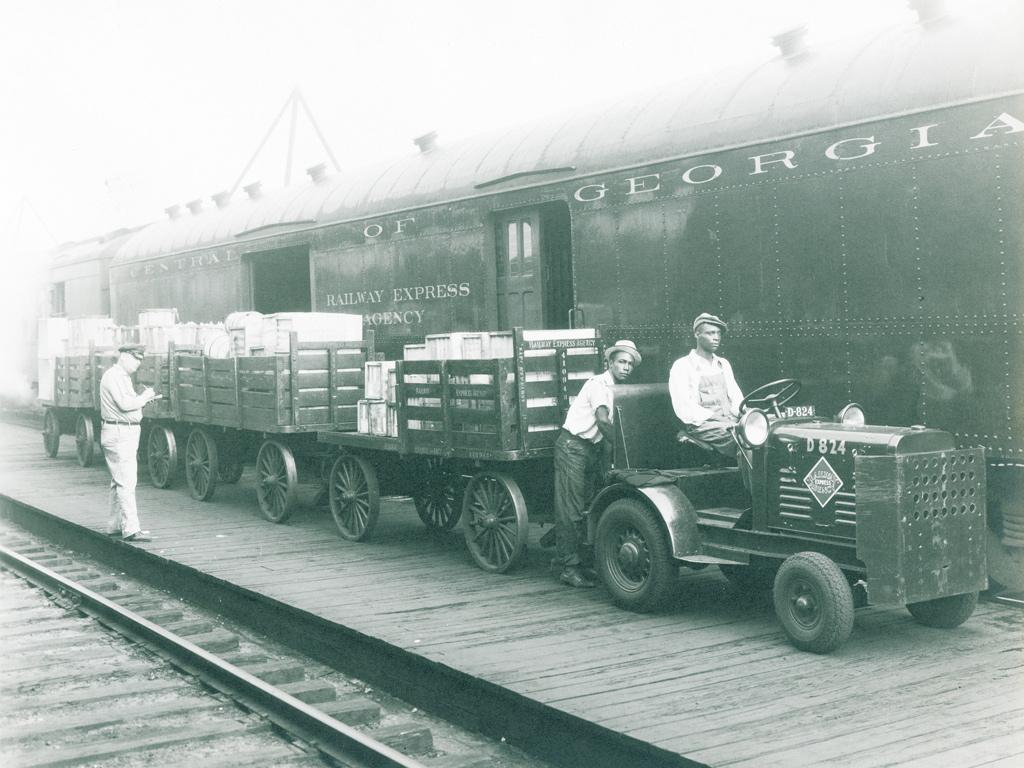
1927
The Clarktor tow tractor is introduced. The Clarktor was used to pull airplanes and warehouse trailer trains. It was equipped with an electric self-starter, the first industrial truck or tractor to have this feature as standard equipment. The Clarktor remained in production until 1987. -
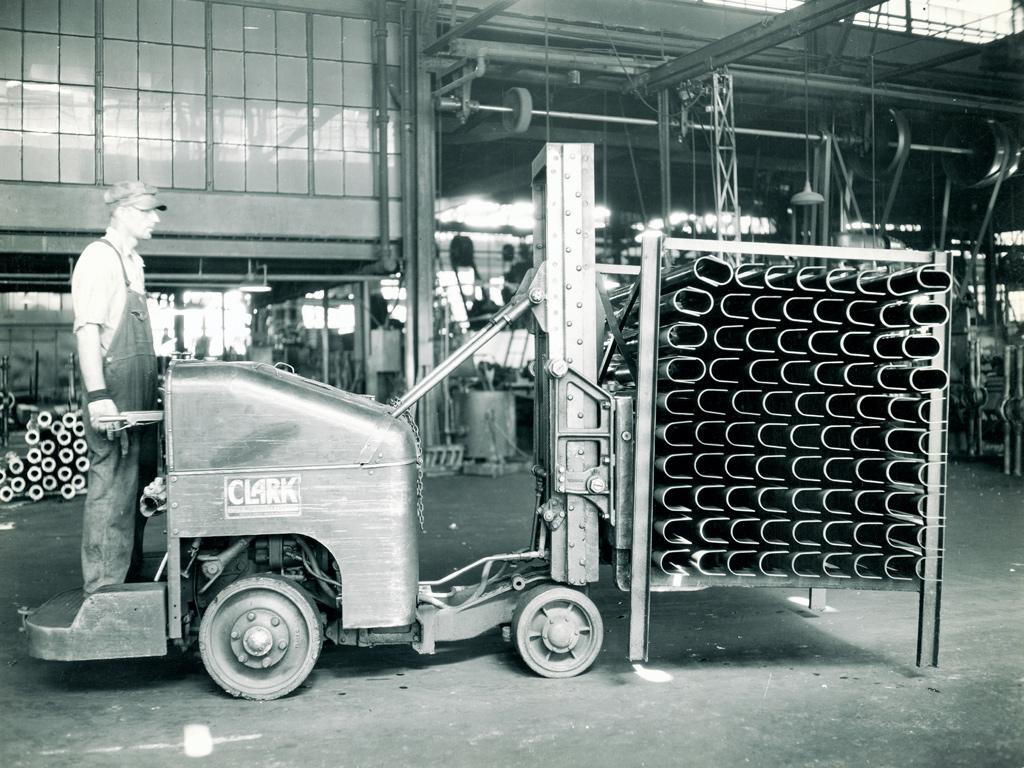
1928
The Tructier is introduced. The Tructier was the world's first internal combustion forklift truck that used hydraulics, not chains and cables, to lift a load. -
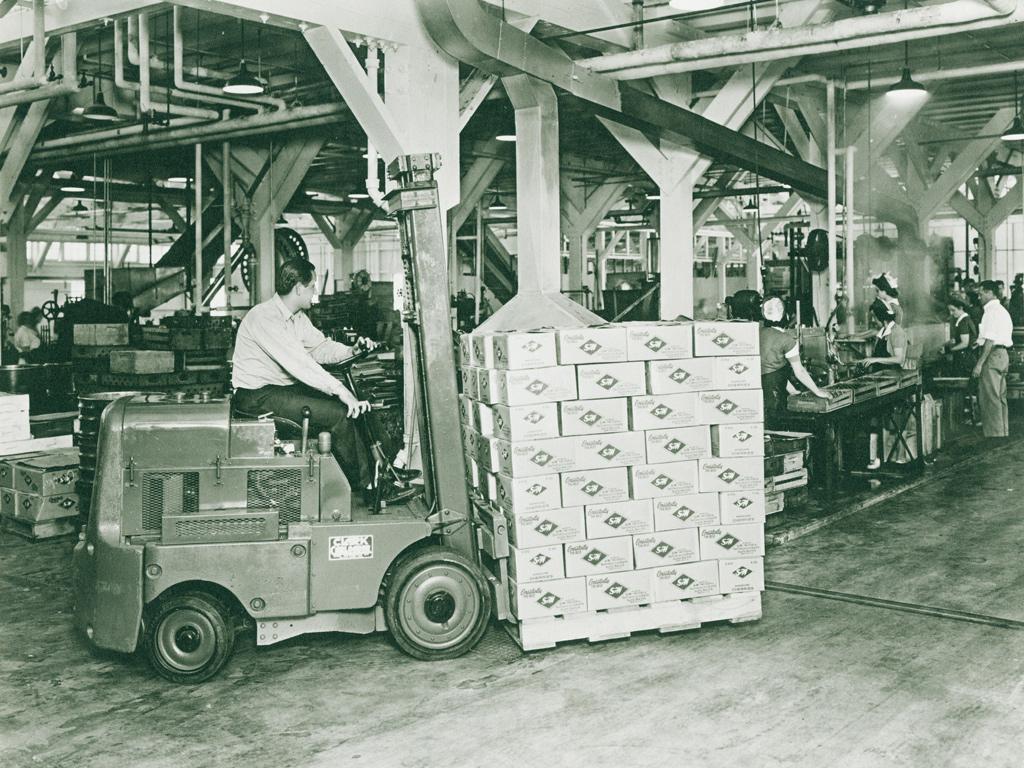
1938
The Carloader, the world's first modern short-coupled internal combustion forklift truck, is introduced. The Carloader was mass-produced from its introduction and was at one time imitated by many other forklift truck manufacturers. It remained in production until 1964. -
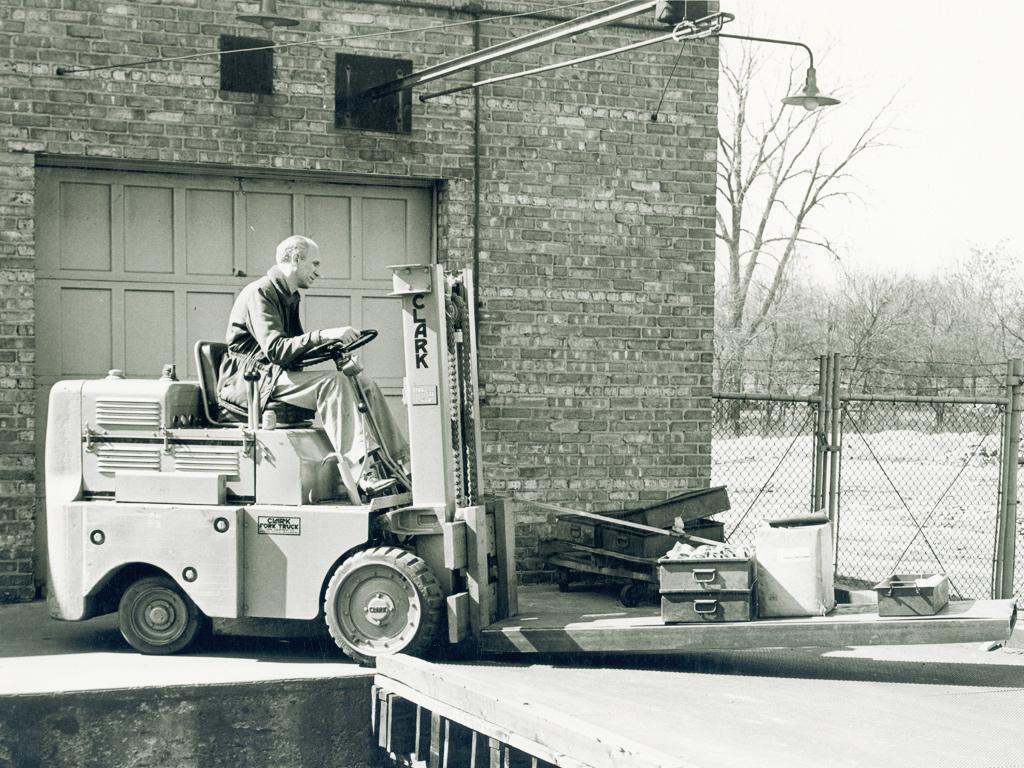
1939
The Utilitruc is introduced. This heavy-duty internal combustion CLARK forklift was used mainly in the metal fabrication and stevedoring industries and remained in production until 1964. -
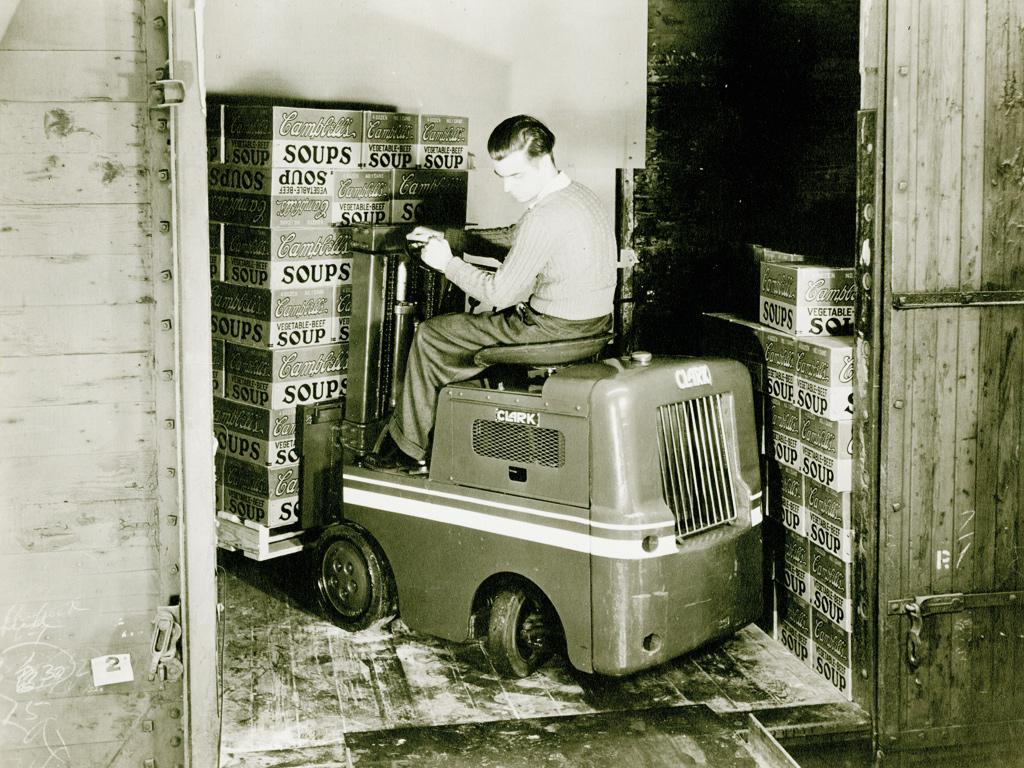
1941
The Clipper is introduced. The Clipper became a standard for the internal combustion forklift industry and at one time accounted for 50 percent of all sales in the 2000 pound capacity range. Like the Carloader and Utilitruc models, the Clipper was manufactured until 1964. -
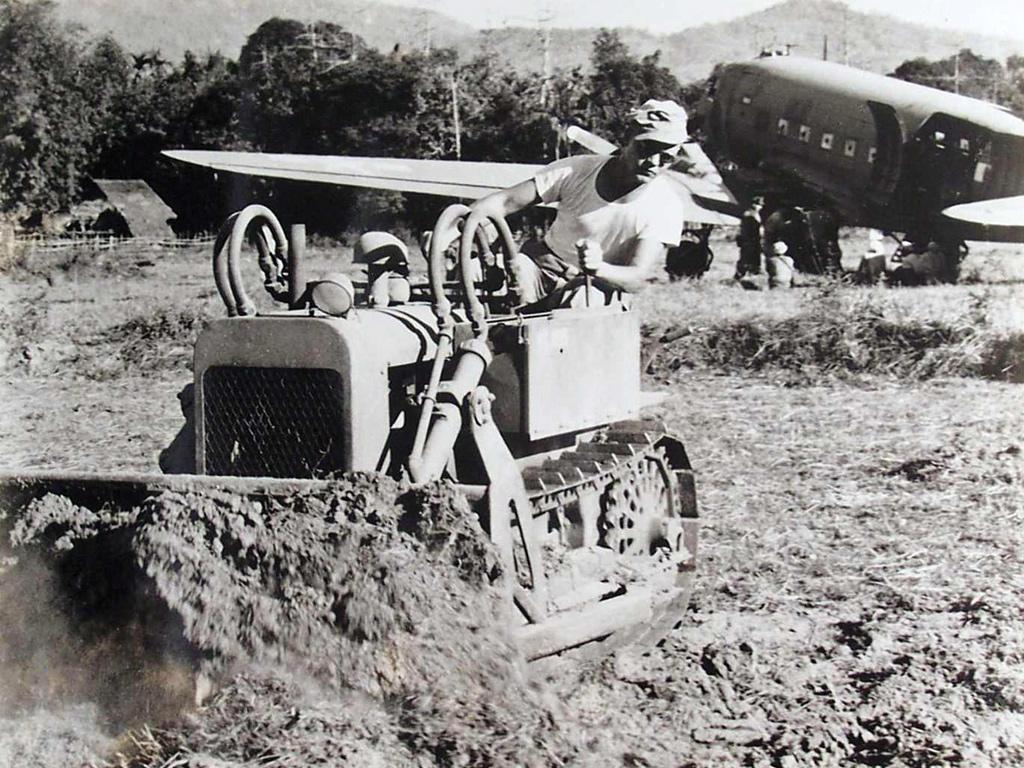
1941 - 1945
CLARK produces almost 90 percent of the military requirements for forklift trucks and tow tractors. It was once said during WWII that there was not an air field under Allied control that did not have a CLARK forklift truck or tow tractor. By the end of the war, the widespread use of CLARK lift trucks by the Allied Forces and warrelated industries made "CLARK" and "forklift" almost synonymous. -
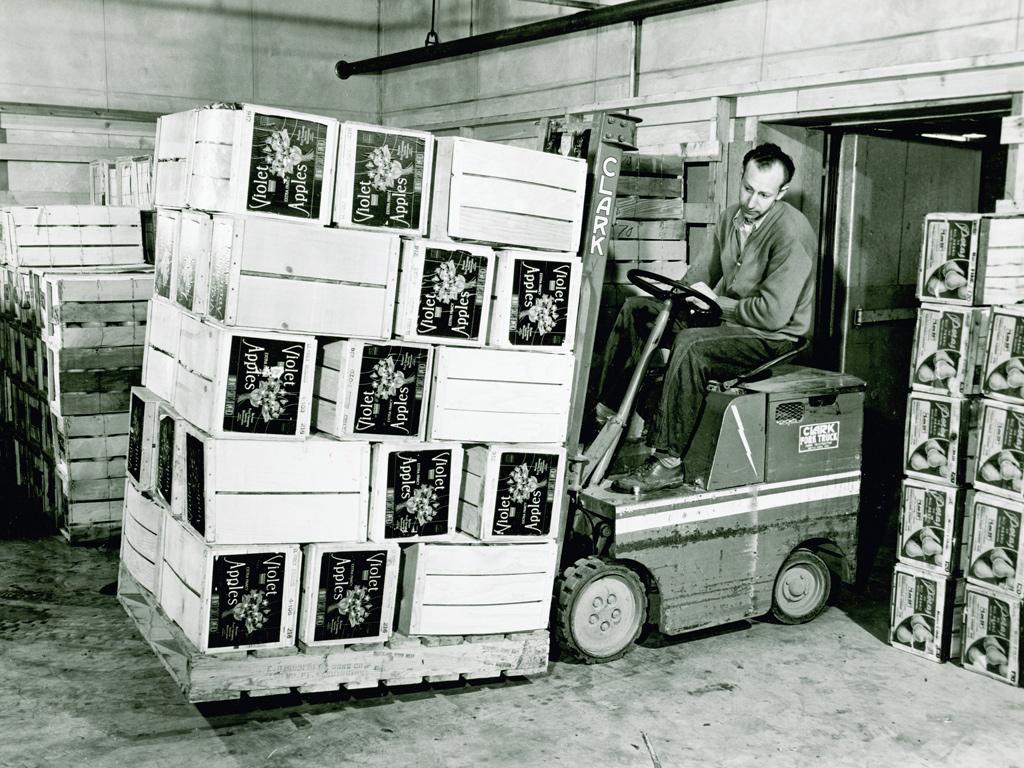
1942
The first Electric Clippers, Carloaders, and Utilitrucs are introduced. However, because of wartime production demands for Carloader and Clarktors, they were not put into full production until 1945. -

1943
The Planeloader, CLARK's first pneumatic-tired forklift truck, is introduced. It was designed principally for off-road operation at Allied air bases during WWII. War surplus Planeloaders were used by truck farmers, contractors and airlines. CLARK is awarded the Army-Navy "E" Award for outstanding war production. CLARK is the first lift truck manufacturer to put warning labels on lift trucks. -

1945
The Trucloader is introduced. It was intended for operations with limited elevator or floor load capabilities and was manufactured until 1967. -
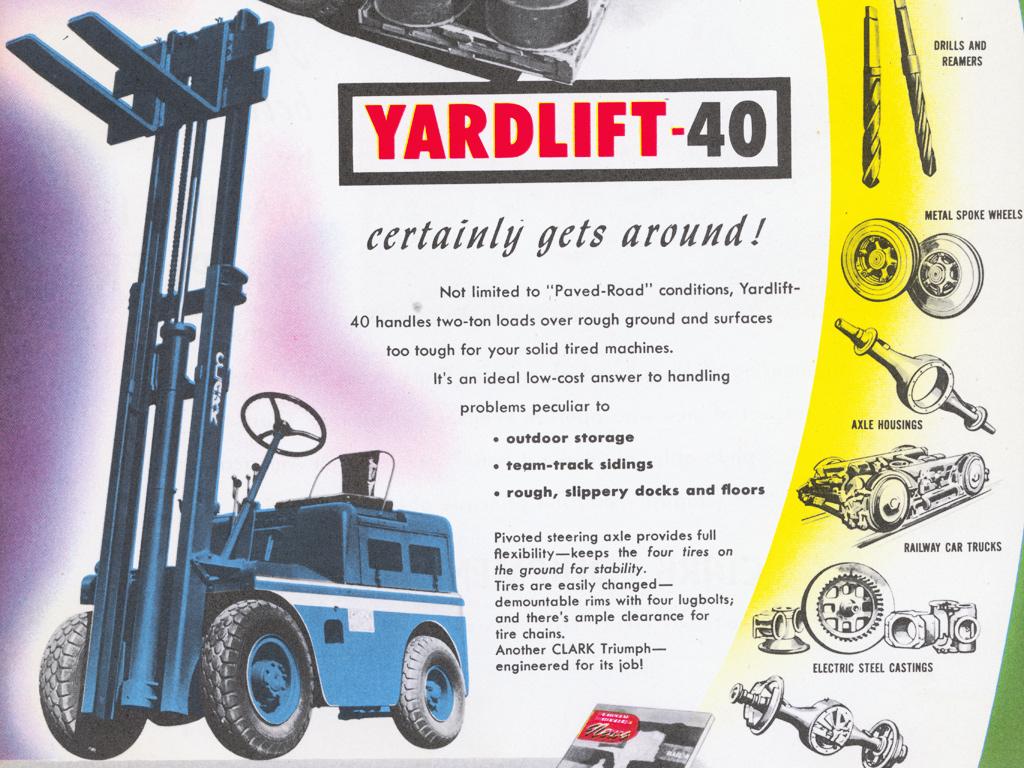
1946
The Yardlift 40 is introduced. The Yardlift 40 was the beginning of the pneumatic Yardlift line. It was intended for inside and outside use in manufacturing and shipping facilities. -

1948
CLARK's innovative Dynatork Drive is introduced. The Dynatork was an electro-magnetic power transmission device between the internal combustion engine and the transmission. It replaced the dry friction clutch used on all forklift trucks up until that time. -
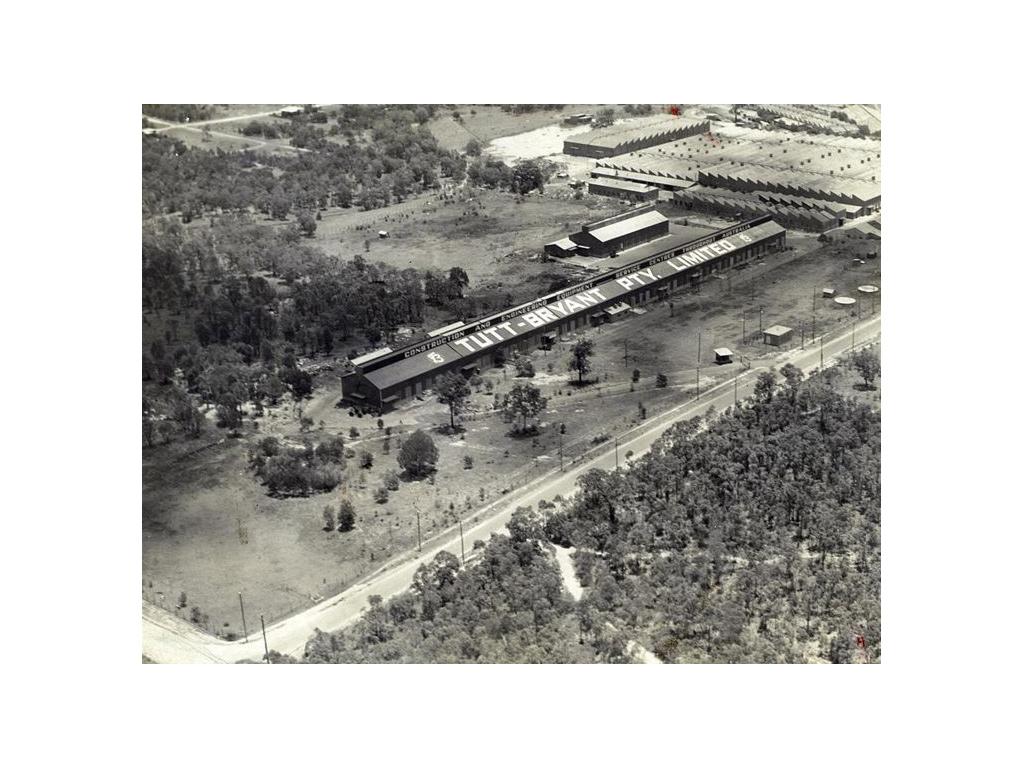
1948
CLARK Equipment enters into manufacturing license agreement with Tutt-Bryant Limited of Sydney, Australia. This was the beginning of overseas production by CLARK. -
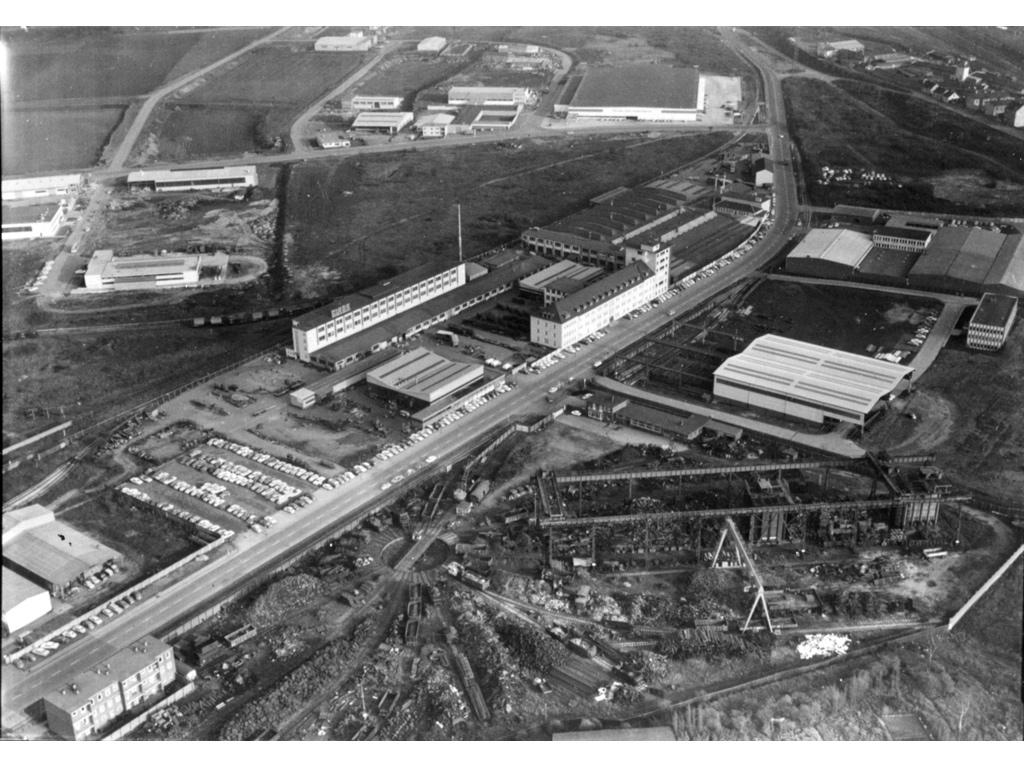
1950
CLARK Equipment enters into manufacturing license agreement with Schultz-Stinnes of Essen, Germany. By 1952, the licensee was re-named Ruhr Intrans Hubstapler and located in Mülheim a.d. Ruhr when it started shipping CLARK forklift trucks into the European market. -
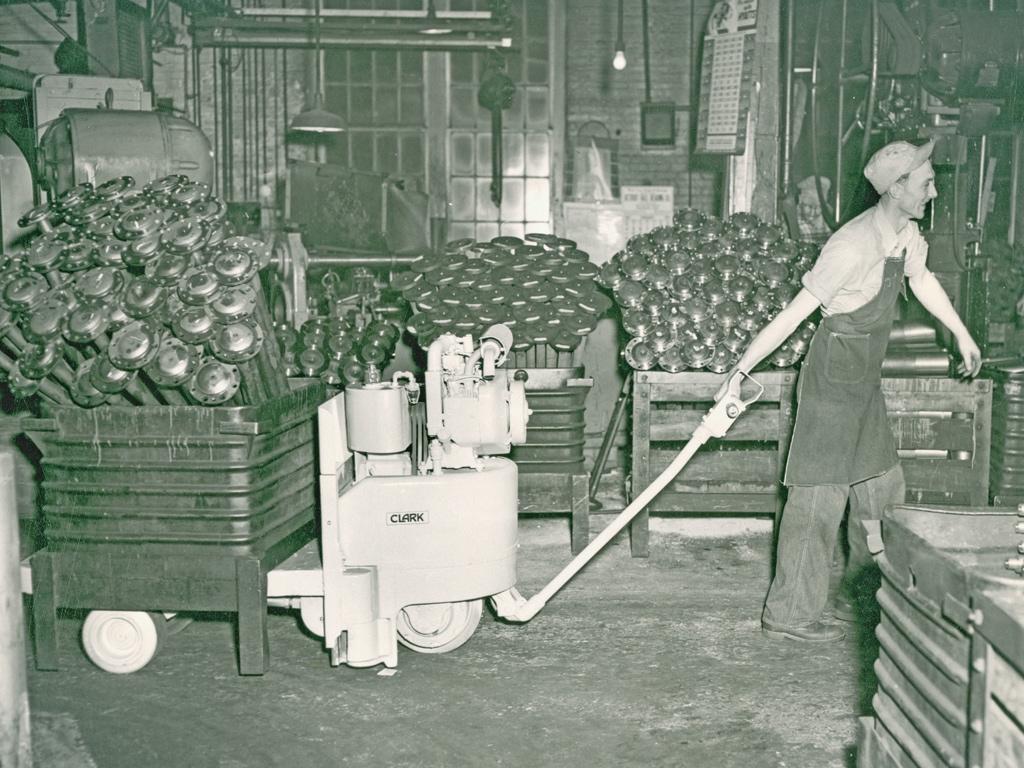
1951
The Hydrolift (internal combustion) and Electrolift (electric) pallet trucks are introduced. Later branded the Powrworker, the Electrolift was a powered walkie-type hand truck. It was available in pallet, platform, tug and forklift stacker type trucks. -
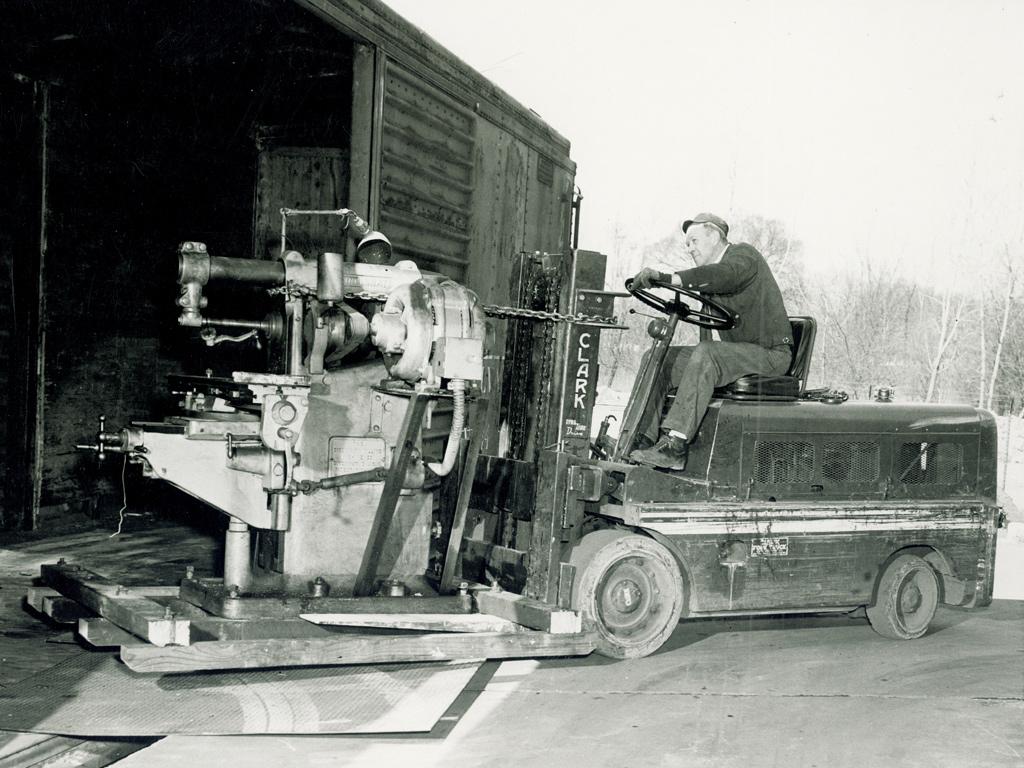
1953
The Hydratork fluid transmission is introduced. The Hydratork transmission was designed and built by CLARK and used a torque convertor to replace the dry friction clutch. -
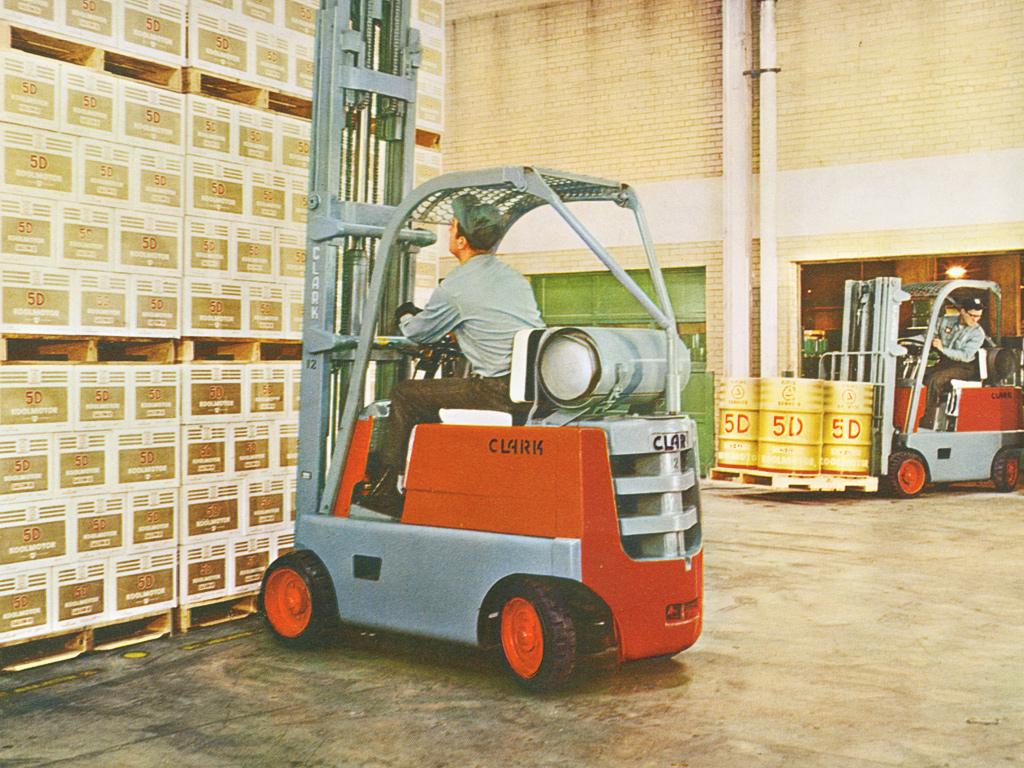
1956
The Clarklift family line is introduced. The Clarklift was a complete line of internal combustion and electric powered forklift trucks and was available in both cushion and pneumatic-tired versions. It eventually superseded the Carloader, Utilitruck and Clipper models. CLARK introduces the nested I-beam upright. This new upright design dramatically improved upright strength and load stability. -

1959
CLARK International, C.A. launches Equipamentos CLARK S.A. in Campinas, Brazil. This was CLARK's first production facility in South America. -

1964
CLARK is the first lift truck manufacturer to install load back rests and overhead guards as standard equipment on all of its trucks. Lift truck production begins at CLARK Equipments's St. Thomas, Ontario, Canada plant. -
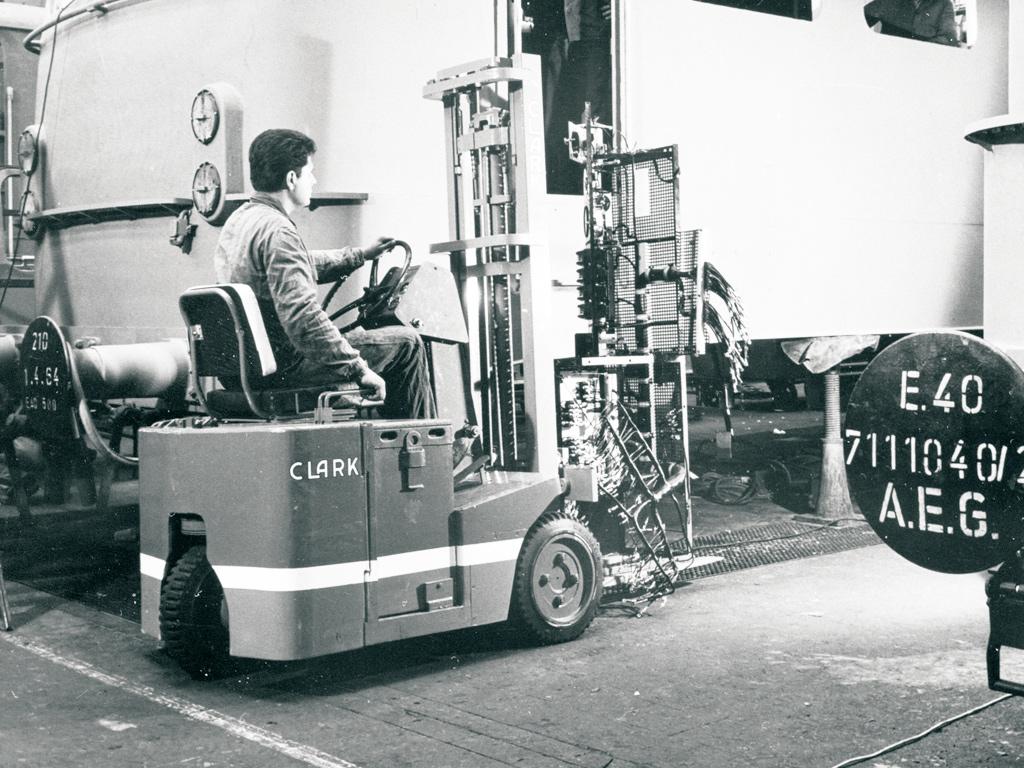
1967
The TW15/20 is introduced. The TW15/20 was the first electric three-wheel lift truck in the U.S. and became an industry standard. This highly maneuverable lift truck was used across multiple industries including shipping, warehousing and bottling. The TW15/20 evolved into the 24 volt TM10/15S in 1981. The TM10/15S in turn evolved into the 36 volt TM15/20 in 1986. -
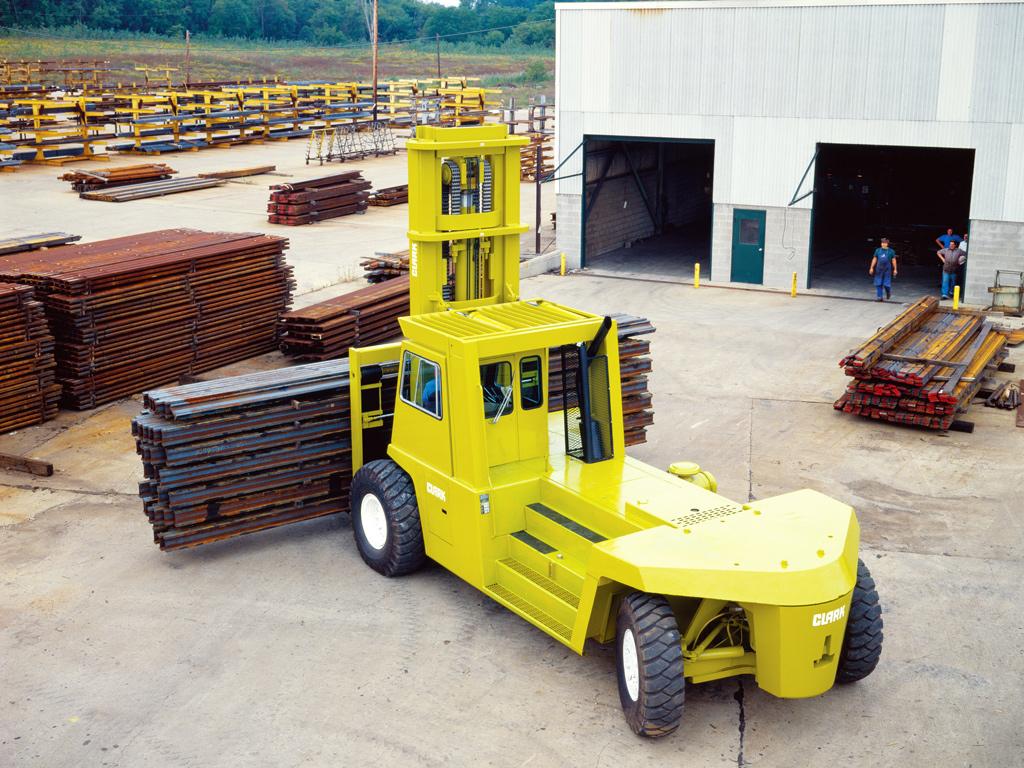
1968
The C500 family line is introduced. The C500 line included internal combustion and electric trucks and was available with both cushion and pneumatic tires. CLARK forklifts in the C500 line ranged from 2000 pound capacity models for warehousing use to large 80,000 pound capacity models for steel fabrication. It eventually replaced the Clarklift model line. -
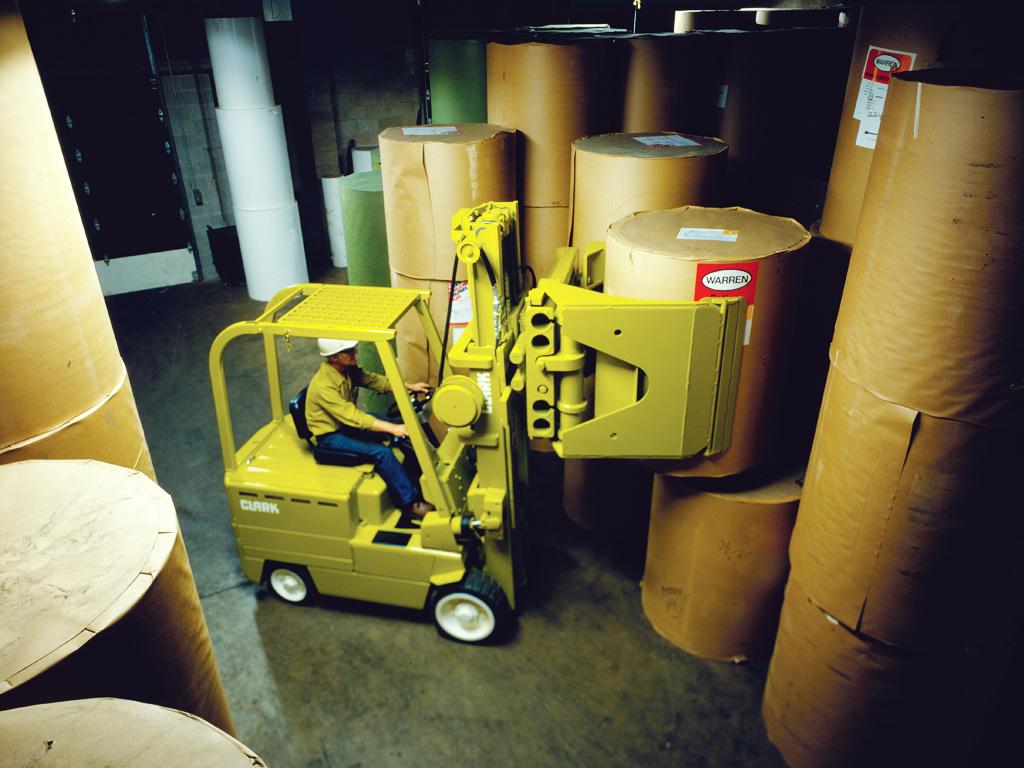
1972
CLARK offers the industry's first dual voltage electric trucks. These trucks provided performance options based on the demands of the customer's application. -
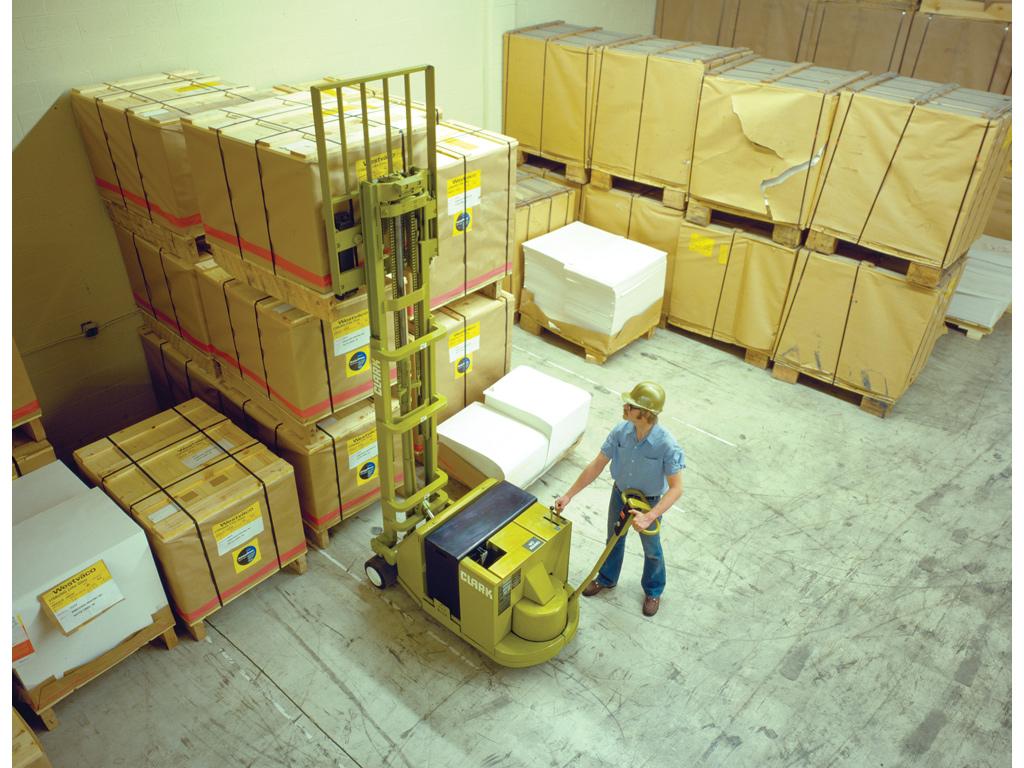
1974
CLARK's Georgetown, Kentucky plant begins production of sit down, narrow aisle stand-up & Powrworker electric lift trucks. -

1976
CLARK builds its 500,000th truck, a C500-50 internal combustion four wheel forklift truck. Donated to Western Michigan University in 1977, this truck is still in service today. -
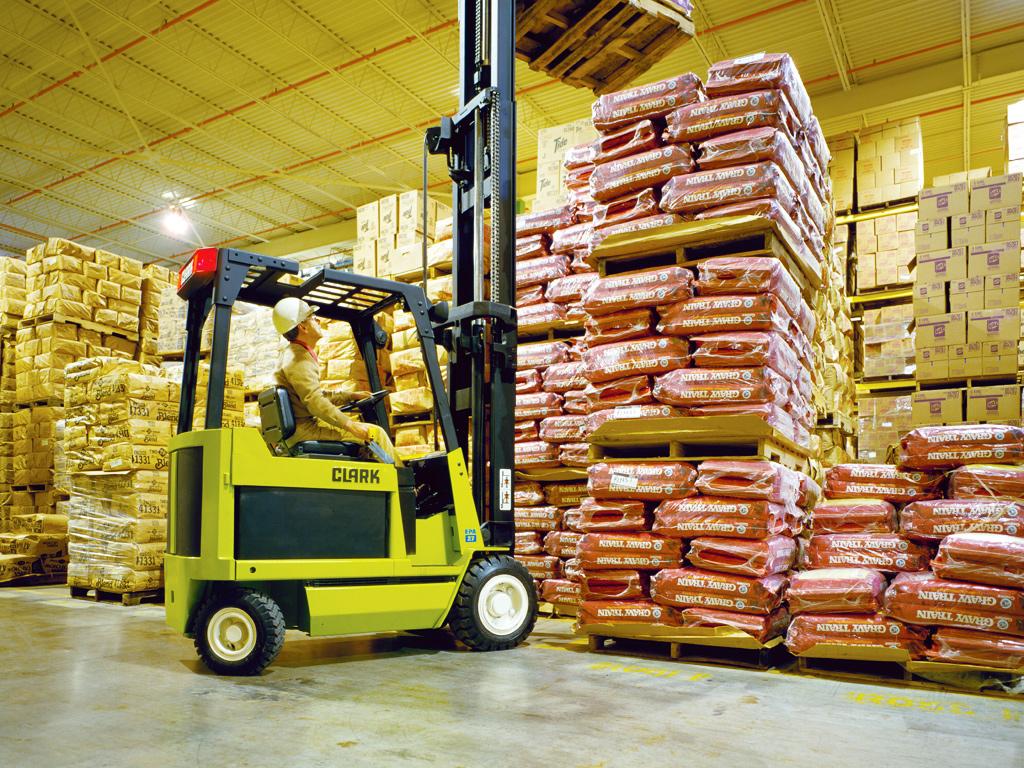
1981
The ECA17-30 & EPA 20-30 four wheel electric trucks are introduced. They represented a major advance in CLARK electric lift truck design and ergonomics through improved reliability, productivity and operator comfort. The ECA model evolved into the ECS17-30 in 1987, which in turn evolved into the ECG20-32 in 1996. -
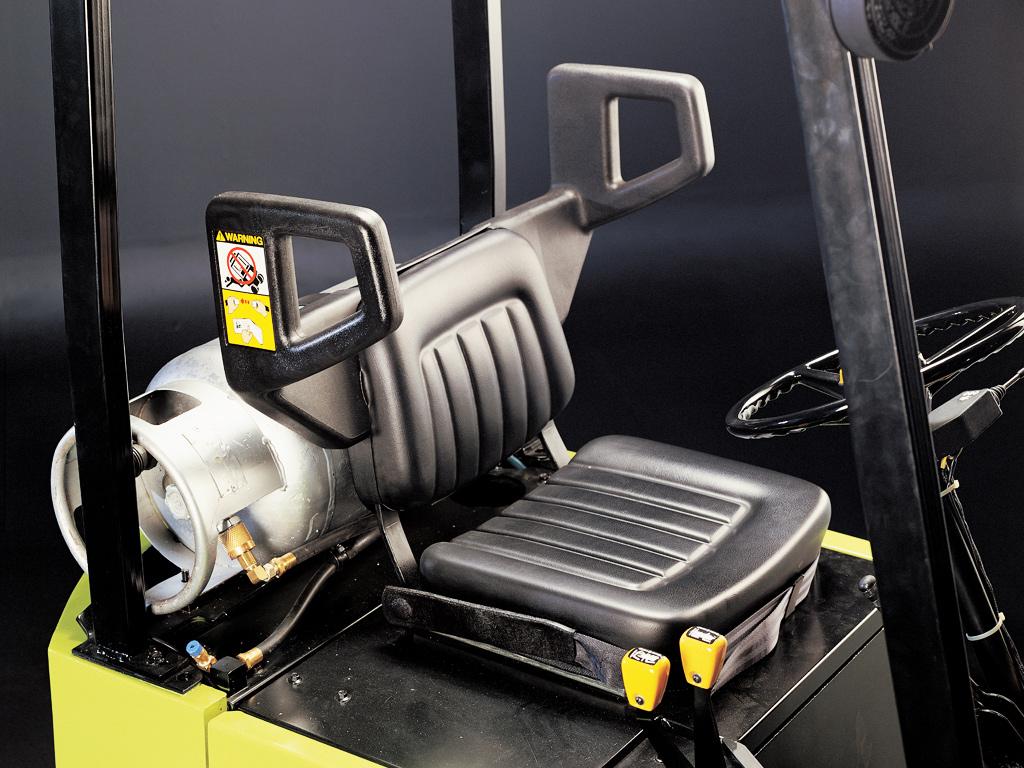
1983
The CLARK safety seat retrofit program is launched. CLARK's pioneering operator restraint system was offered free of charge to existing CLARK forklift truck customers. The patent for this safety innovation was offered to all lift truck manufacturers, royalty-free. -
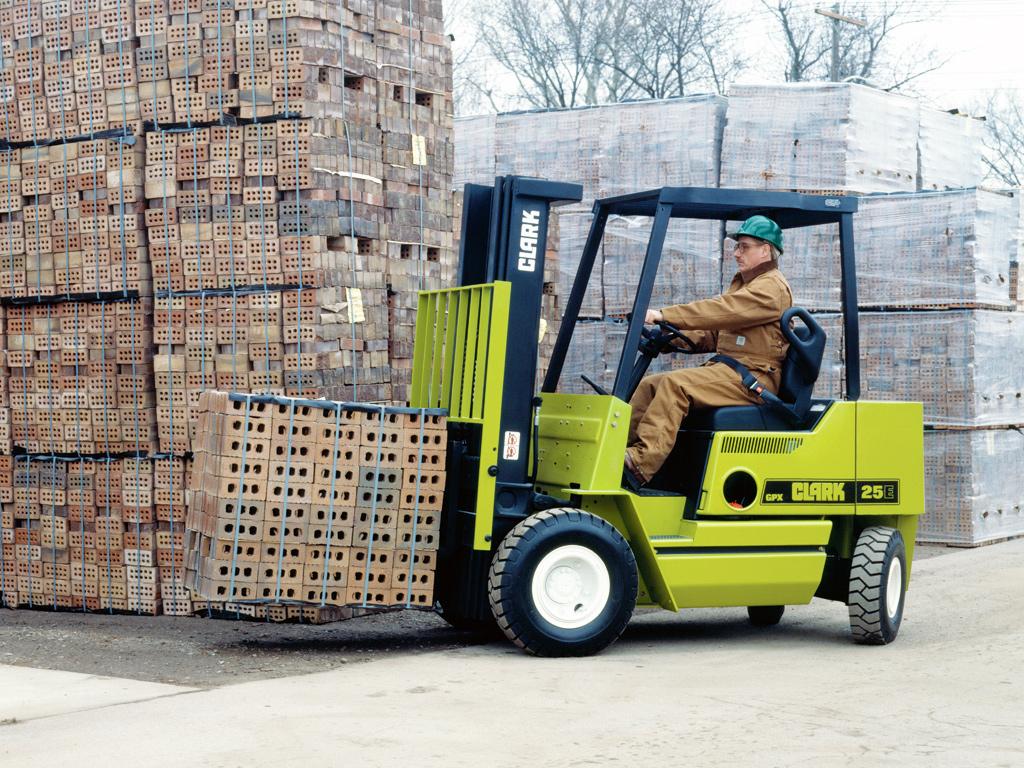
1985
The GCS/GPS "System" model trucks are introduced. The System Truck concept enabled customers to match their forklift trucks to their applications through a selection of engines, axles and transmissions. -
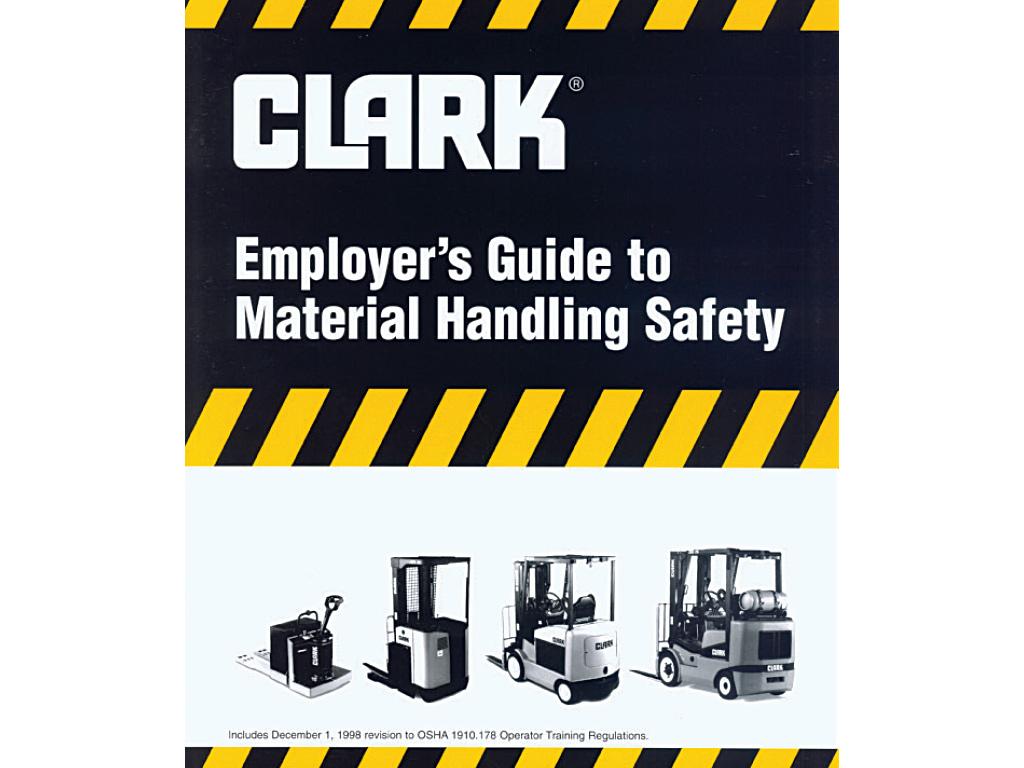
1990
CLARK is the first lift truck manufacturer to provide the "Employer's Guide to Material Handling Safety" on every truck delivered. -
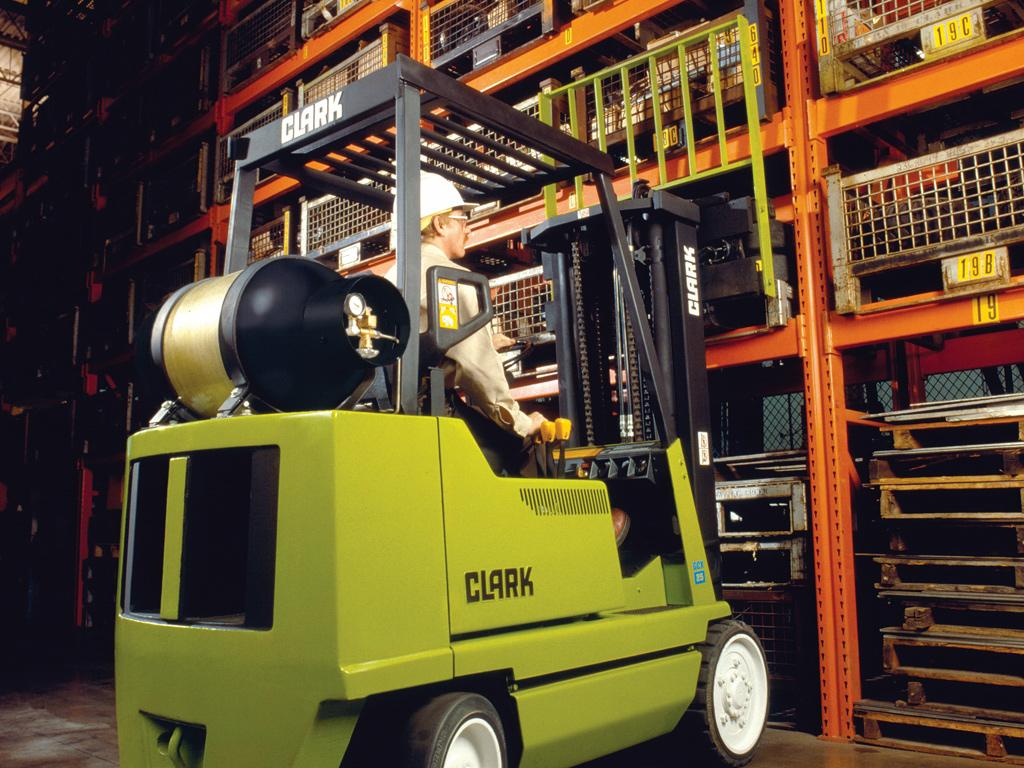
1991
CLARK is the first lift truck manufacturer to offer a factory-installed compressed natural gas (CNG) fuel option. The benefits of CNG include low emissions and costs. -
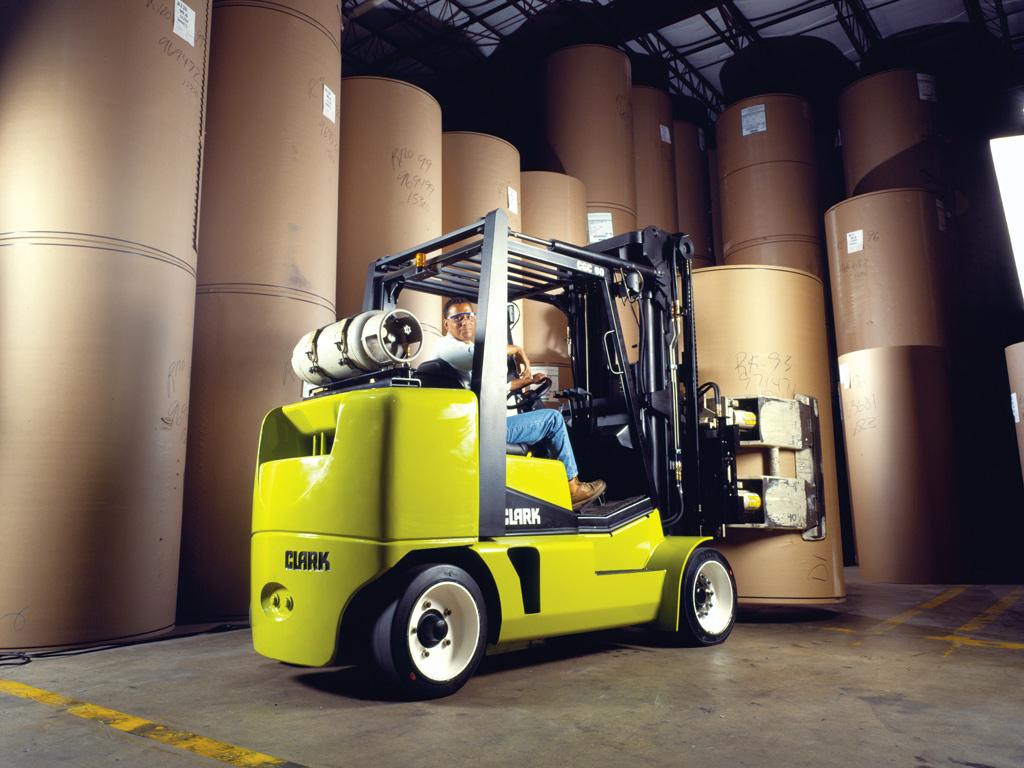
1994
The Genesis model line of four wheel internal combustion cushion and pneumatic-tire forklifts is introduced. The Genesis featured a rubber isolated operator cell to improve operator comfort and set new industry standards for productivity and reliability. -

1997
The one-millionth CLARK truck is produced. This model CDP25H Megastat is now on permanent display in CMHC's showroom in Lexington, Kentucky. -
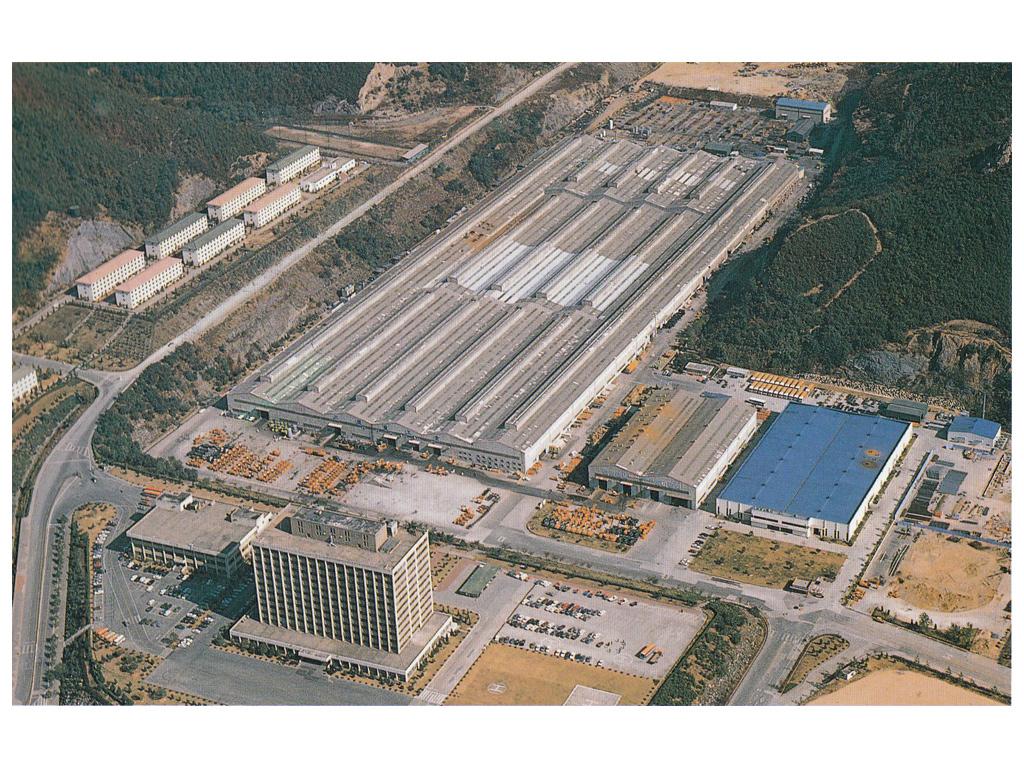
1998
CLARK Material Handling Company acquires the Samsung Forklift Company of Korea. As CLARK Material Handling Asia, this facility designs and manufactures CLARK lift trucks for the global market. -
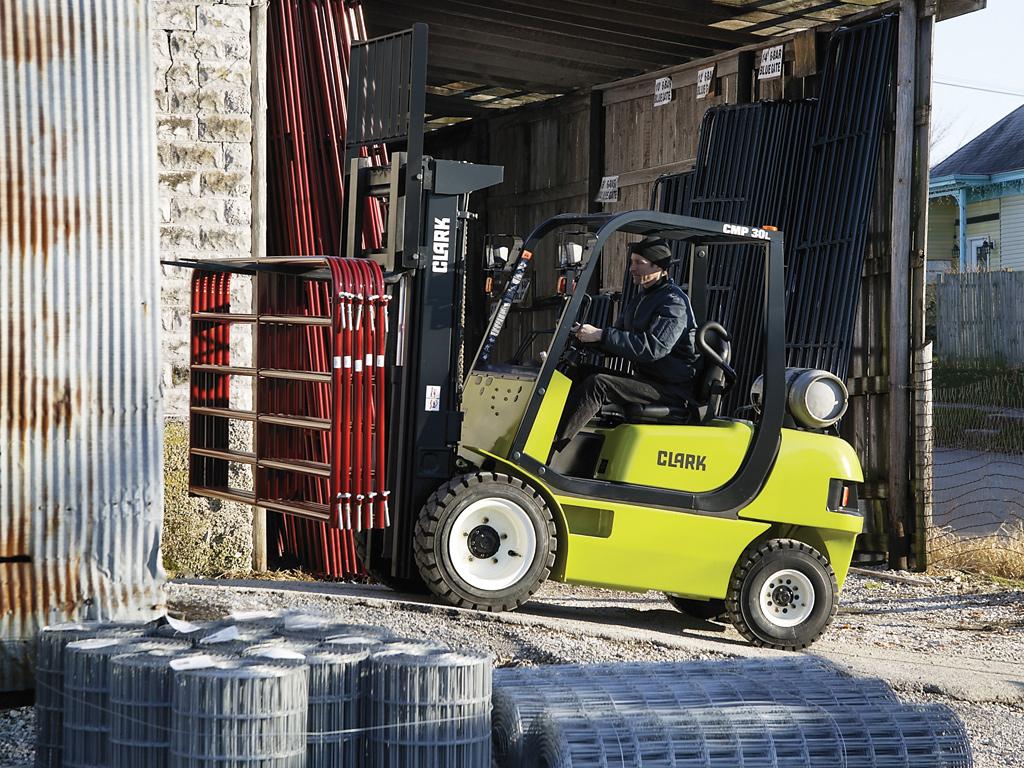
1998
The CLARK M-Series model family, designed and manufactured by CLARK Material Handling Asia, is introduced to the lift truck market. The M-Series models extends and supplements CLARK's global product line-up. -

1999
CLARK Aftermarket Parts Depot in Louisville, Kentucky, is opened. This large parts facility has state-of-the-art pick systems and is strategically located to allow same day shipping to CLARK's dealer network. -
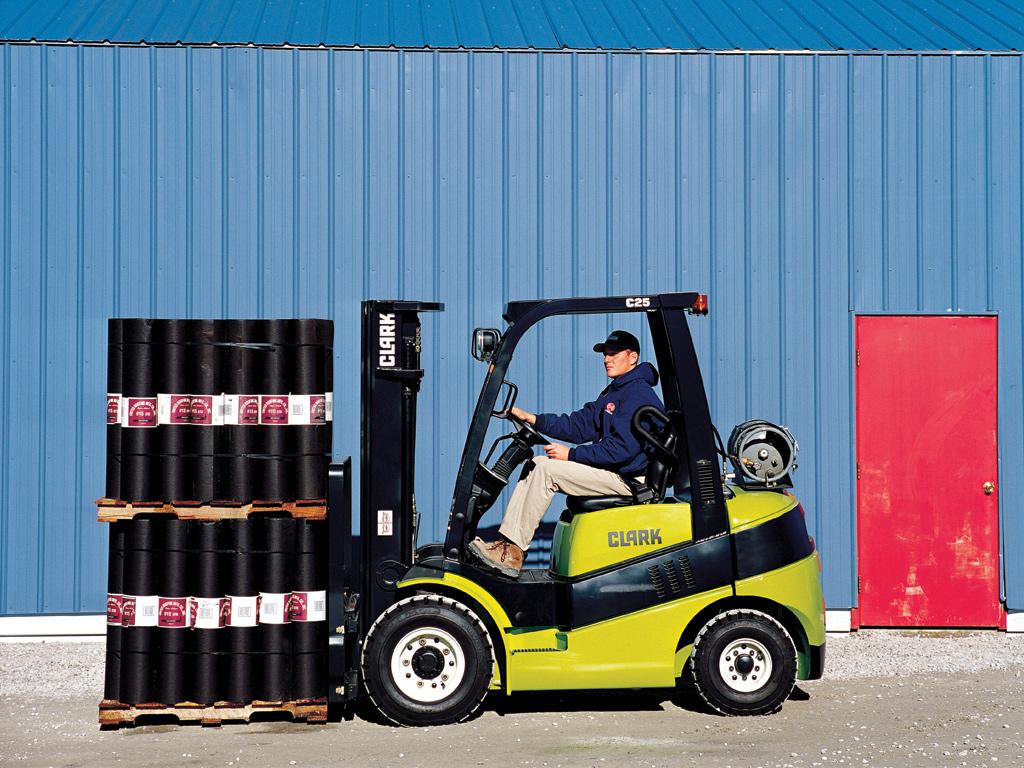
2001
The CLARK GEN2 Series is introduced to the global lift truck market. The GEN2 is available in capacities of 4000 to 6500 pounds and with either cushion or pneumatic tires. Designed and manufactured by CLARK Material Handling Asia, the GEN2 continues CLARK's reputation for building reliable and hardworking lift trucks. -
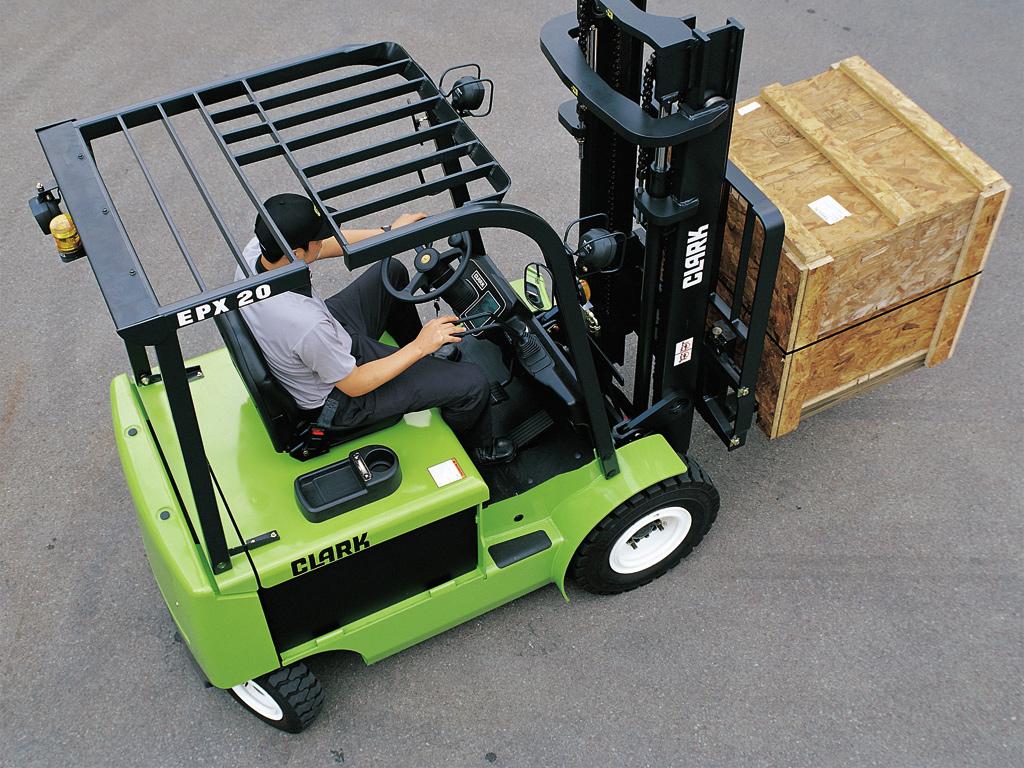
2002
The EPX20/30 Series electric lift truck is released for applications that require pneumatic tires. -
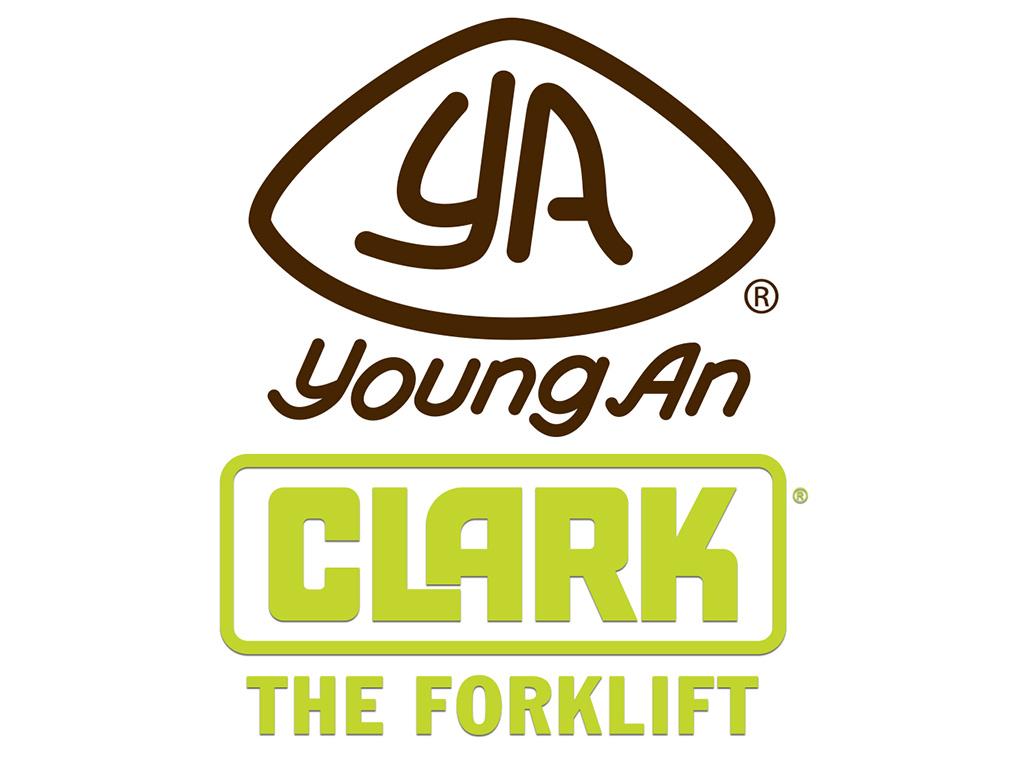
2003
The EPX20/30 Series electric lift truck is released for applications that require pneumatic tires. -
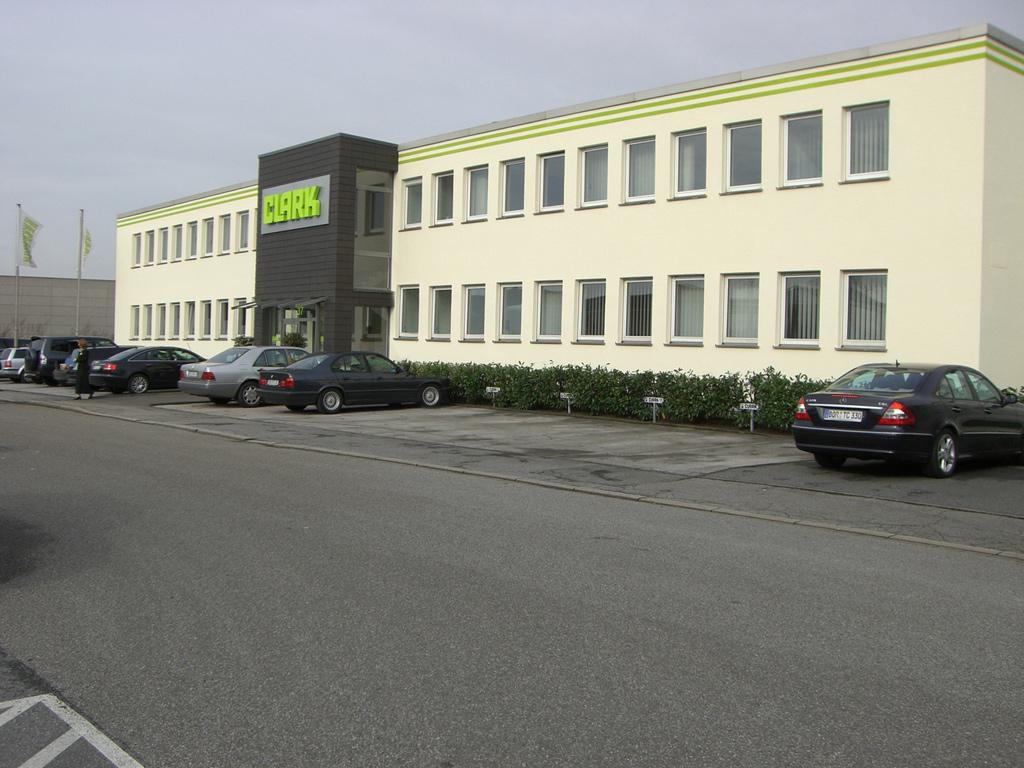
2004
CLARK Europe GmbH opens its new European headquarters in Duisburg, Germany to service CLARK dealers throughout Europe. -
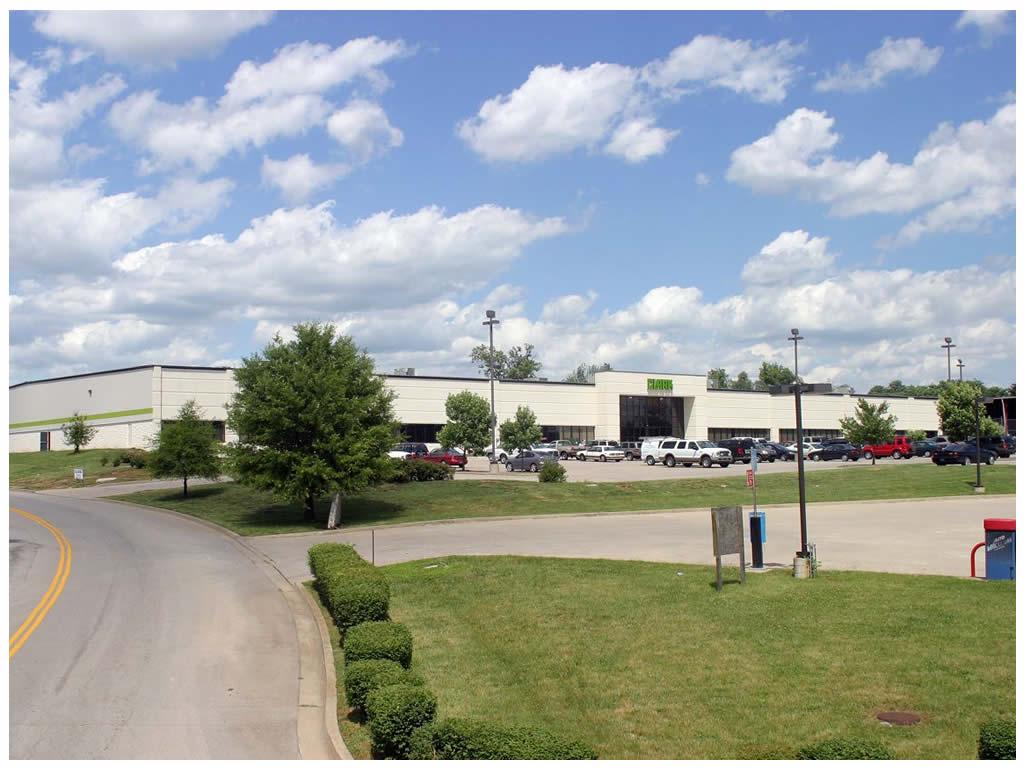
2005
CLARK Material Handling Company (CMHC) opens its new North American headquarters in Lexington, Kentucky. -

2005
The TMX12-25 and ECX20-32 sit-down electric riders with new 100% AC technology are introduced. These trucks excel in manufacturing, warehousing, bottling and shipping & receiving applications. The TMX12-25 and ECX20-32 AC feature reduced maintenance and noise. -

2006
Production of stand-up electric forklift trucks moves to the CLARK Material Handling Company facility in Lexington, Kentucky. -
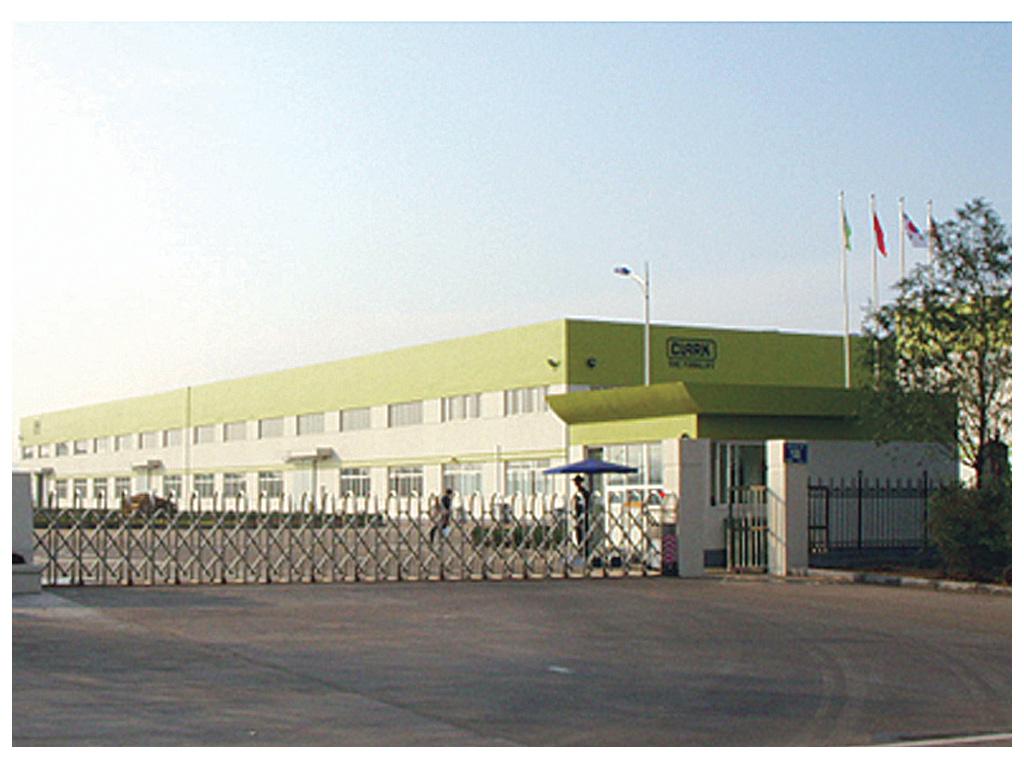
2006
CLARK Material Handling Company, Ltd headquarters and factory opens in Qingdao, China. This facility manufactures a range of electric and internal combustion lift trucks. -
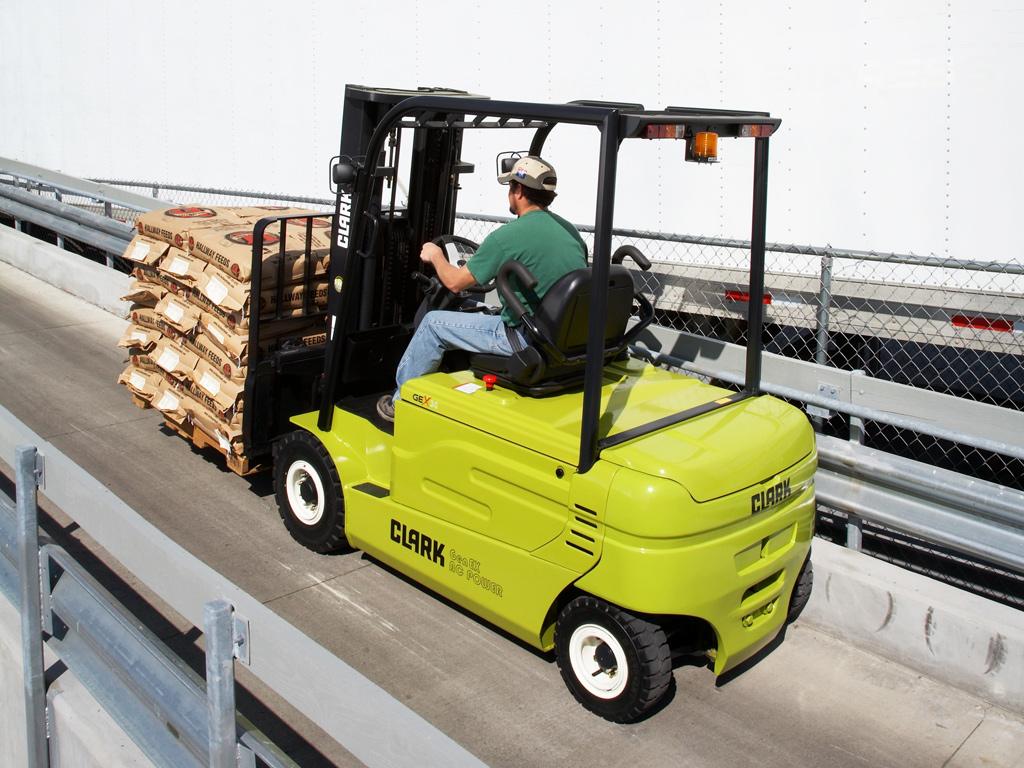
2006
The GEX20/30 electric lift truck is introduced. This 80 volt pneumatic-tired truck offers outstanding speed and performance. A zero turn radius steer axle provides unmatched maneuverability. -
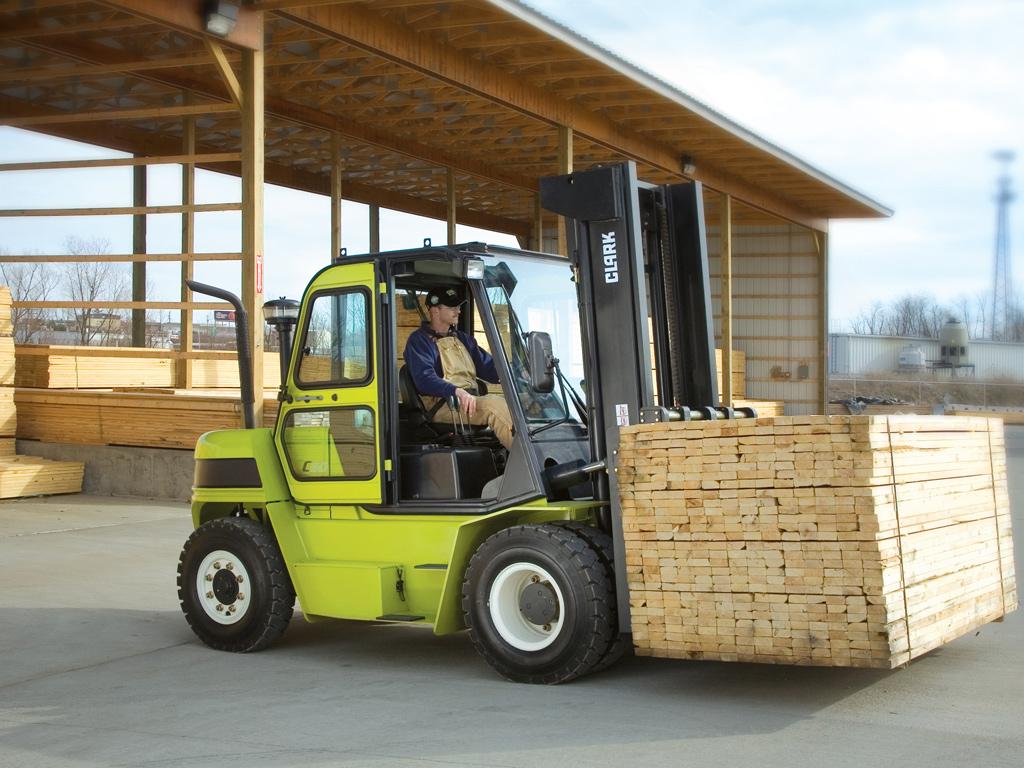
2007
CLARK introduces the C60-80 heavy-duty four wheel lift trucks. This new truck is intended for yard applications in heavy manufacturing, building materials handling, stevedoring and warehousing. -
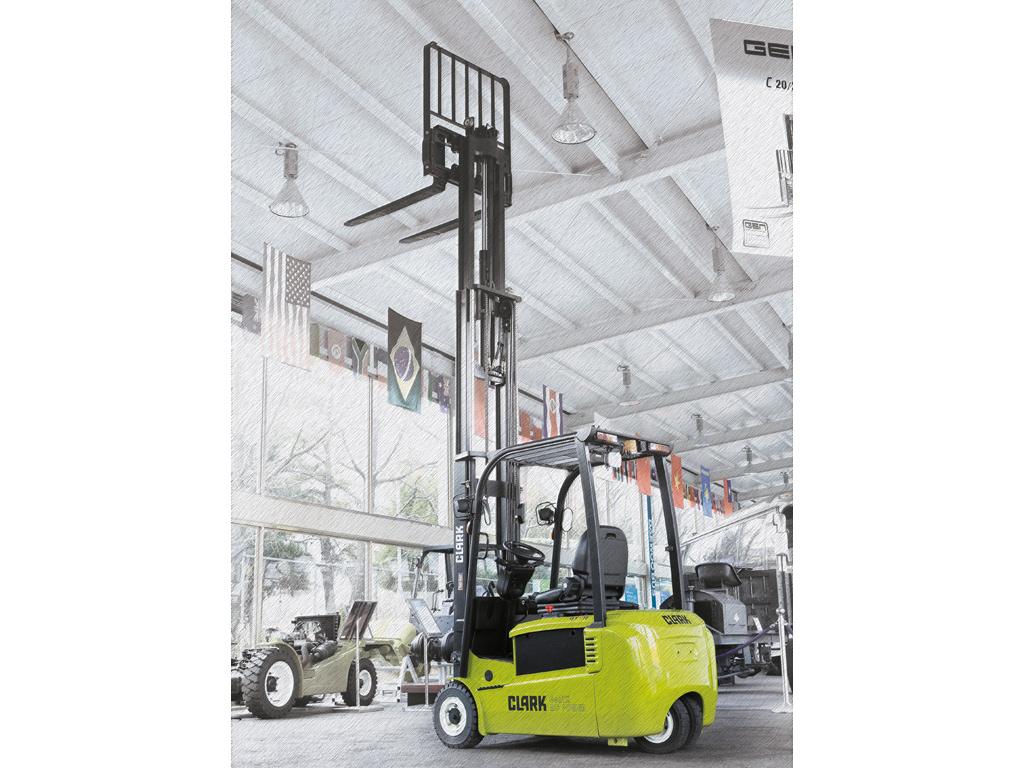
2008
World premiere of the new electric lift trucks GTX16-20s and GEX16-20s. -
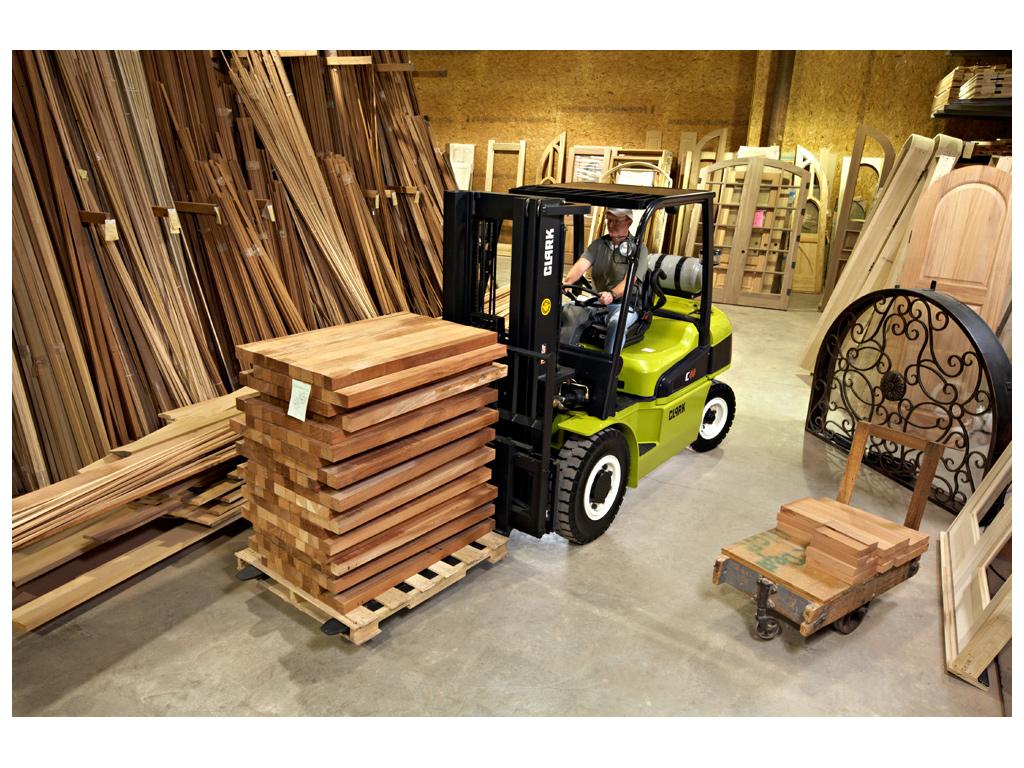
2010
CLARK extends its GEN2 series and introduces the C40-55s LPG and diesel lift trucks. -
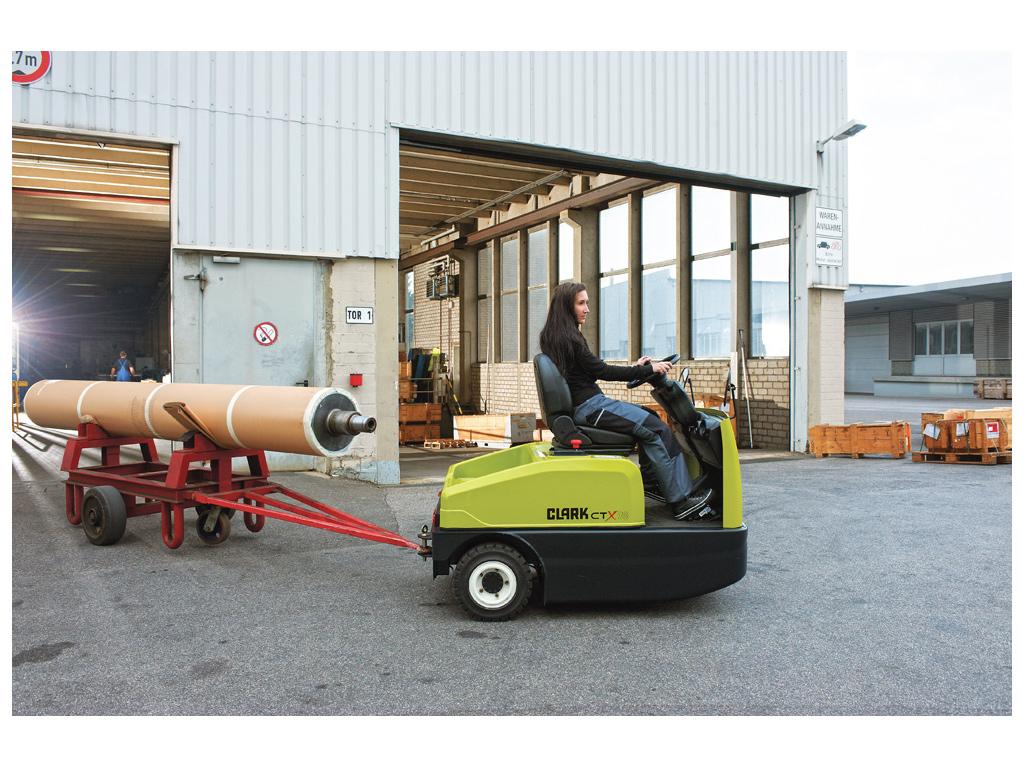
2011
Introduction of the electric tow tractor CTX40/70. -

2012
CLARK extends its electric series and introduces the GEX40-50. -
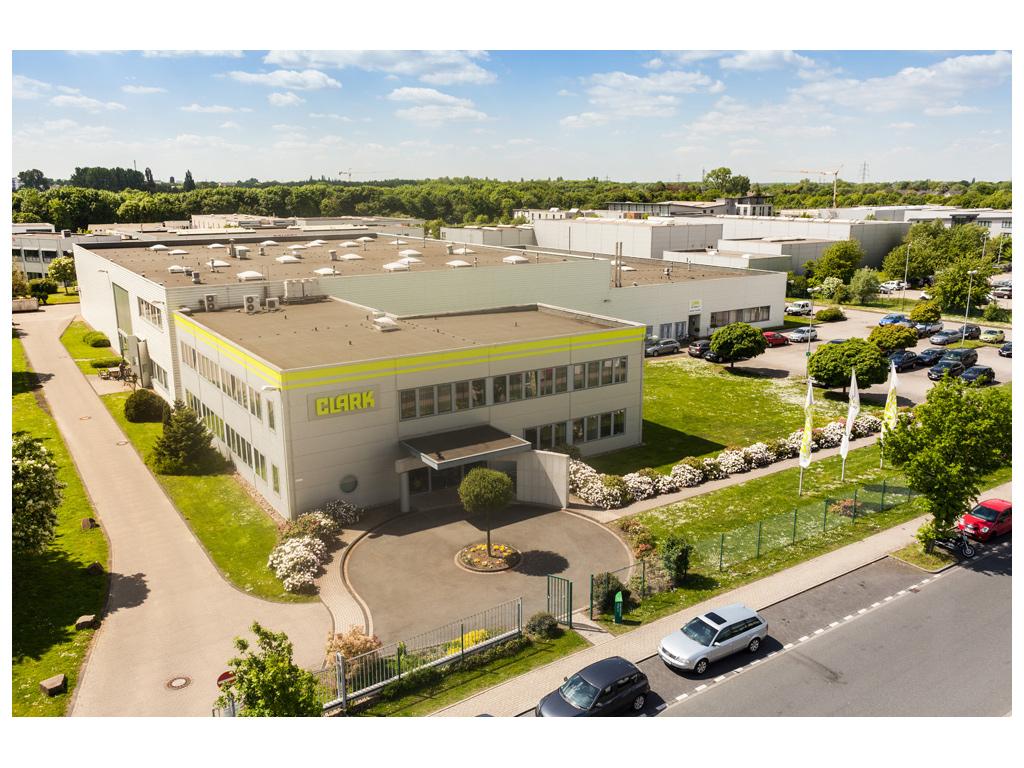
2014
CLARK Europe opens its new headquarters in Duisburg/Germany. -

2014
The new pallet truck and power stacker SX and PX plus the reach truck SRX are introduced”. -
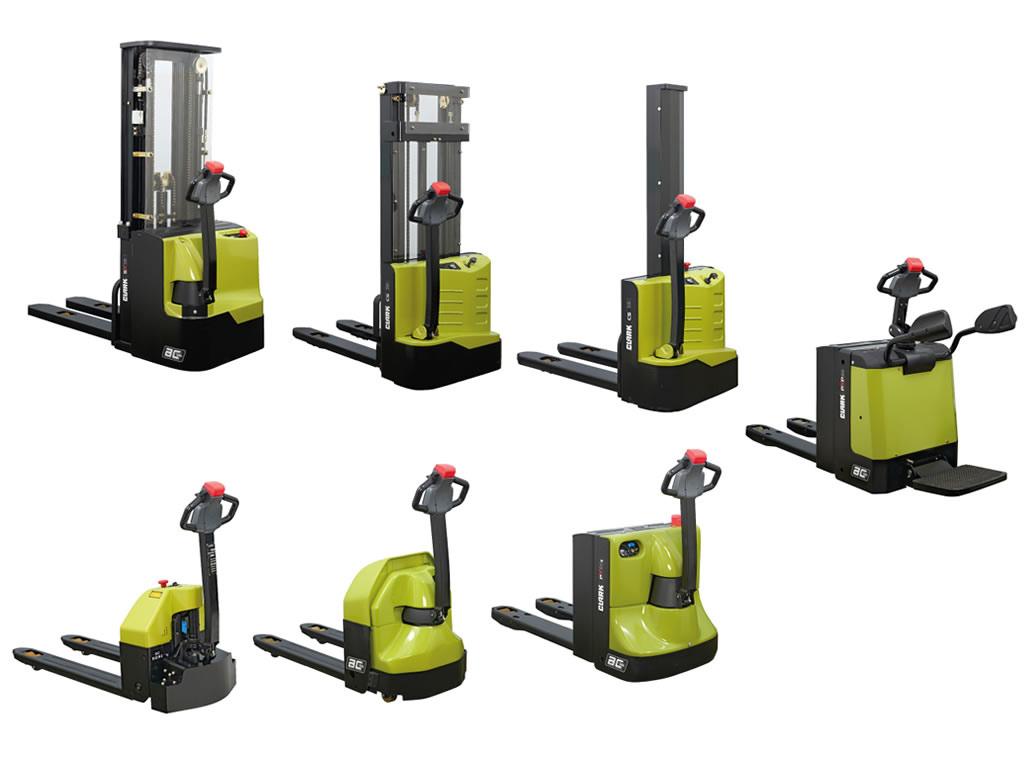
2015
CLARK extends its warehouse series with the CC Range. -

2016
The new diesel and LPG truck range GTS20–33 is introduced. -

2017
CLARK's 100th Centennial anniversary.








